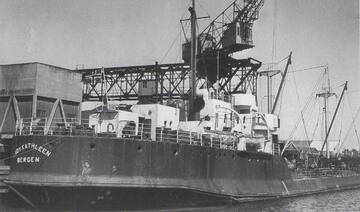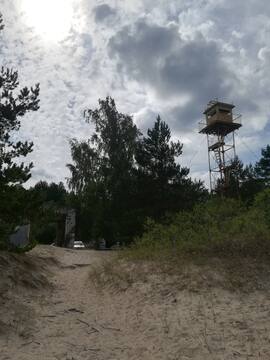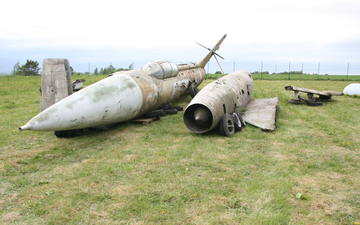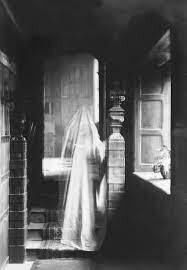Karinio paveldo turizmo istorijos
Pasakojimai, asmeniniai prisiminimai ir liudijimai apie karinio paveldo vietas ir jų istoriją. Šie pasakojimai gali būti apie vietą, kurią galima pamatyti, tokiu atveju ji pažymėta žemėlapyje kartu su kitomis karinio paveldo vietomis. Taip pat gali būti pasakojimai apie vietas, kurių nebegalima rasti. Jos žemėlapyje nepažymėtos.
Pastaba: nebūtinai visos istorijos susijusios su istoriškai patvirtintais faktais. Jos paremtos asmeniniais žmonių prisiminimais, patirtimi ir istorinių įvykių supratimu.
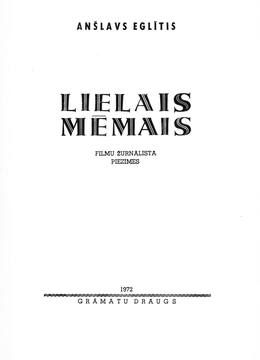
Anšlavo Eglītio prisiminimai apie Latvijos nepriklausomybės karą ir 1919 metų įvykius Alūksnėje
1919 m. kovo 27 d. 1-asis Valmieros pėstininkų pulkas kartu su Estijos gvardijos (kaitselit) Talino (tuomet Rėvelės) ir Tērbato batalionais bei trimis šarvuotaisiais traukiniais nuo Melnupės upės krantų pradėjo Latvijos išvadavimą nuo bolševikų.
Naktinis Tehumardi mūšis
Spalio 8-osios vakarą tamsoje prie Tehumardi kaimo susitiko besiveržiančios sovietų ir besitraukiančios vokiečių kariuomenės.
Prožektorių dekoravimas Medumose
1915 metų rudenį fronto linija stabilizavosi. Rusijos imperijos armijos pozicijos ėjo per Medumi. Medumo mieste taip pat buvo dislokuotas 250-asis Prožektorių kompanijos prožektorių skyrius. Nustatyta tiksli šio skyriaus vieta Medumu kaime.

Dovydo žvaigždė Dundagos koncentracijos stovyklos memorialinėje vietoje
Nepriklausomybę atgavę dundagiškiai žydų žudynių ir perlaidojimo vietoje prie kelio Mazirbė-Dundagas pastatė didelę medinę Dovydo žvaigždę, o vėliau Latvijos žydų kongregacijų ir bendruomenių taryba prie jos atidengė ir paminklinį akmenį.
Devynmetės kelionė į tremtį
Rašytoja Regina Guntulytė-Rutkauskienė, ištremta būdama devynerių metų, prisimena 1941 m. birželio 14-osios trėmimą, kai su šeima buvo išvežta į Sibirą. Jos pasakojimas atskleidžia ne tik fizinį, bet ir emocinį tremties skausmą, kuris lydėjo net ir grįžus į Lietuvą.
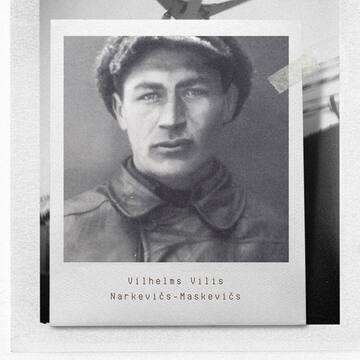
Vilio Narkevičiaus kovinės veiklos aprašymas 1919 m. lapkričio 6 d
Būrio vado, vado leitenanto Juliaus Rozentalio Vilio Narkevičiaus kovinės veiklos aprašas, 1921 m. lapkričio 3 d.
Botaniko darbas pajūryje
Eidamas botaniko pareigas, pakrante jam buvo leista vaikščioti tik su pasieniečiu.

Artūro Ozolo prisiminimai apie laivą „Saratov“
Artūrs Ozols baigė Rygos politechnikumą ir tarnavo karinio jūrų laivyno karininku (midshipman) bei inžinieriumi Rusijos Juodosios jūros laivyne karo laive Panteleimon. Latvijos išsivadavimo kovų metu įstojo į Mokinių kuopą. Liepojoje pradėjo eksploatuoti laivą „Saratov“. Artūro Ozolo prisiminimai apie laivą „Saratov“ išspausdinti mėnraštyje „Dauagavos Vanagi“.
Kaip Ventspilyje kažkas pabėgo nuo pasieniečių savo sukonstruota valtimi
Sovietmečiu Ventspilio uoste bazavosi pasienio patruliniai laivai, kurių užduotis buvo patruliuoti Baltijos jūros vandenyse ir neleisti kirsti sienos iš abiejų pusių – nei iš išorės į vidų, nei iš vidaus į išorę. Tačiau aštuntajame dešimtmetyje Ventspilyje įvyko vienas neeilinis incidentas, apie kurį patys ventspiliečiai ilgai šnabždėjosi ir nuoširdžiai juokėsi savo virtuvėse.
Atsiminimai apie kovas dėl Lietuvos laisvės
Povilas Plechavičius – Lietuvos kariuomenės generolas, pagarsėjęs kovomis prieš bolševikus ir bermontininkus. 1918-07-25 iš Rusijos grįžęs į Lietuvą, P. Plechavičius apsigyveno Žemaitijoje ir suorganizavo savanorių partizanų būrius kovai prieš bolševikų ir bermontininkų pajėgas, su kuriais kovojo Sedos, Mažeikių, Kretingos ir Telšių apylinkėse.
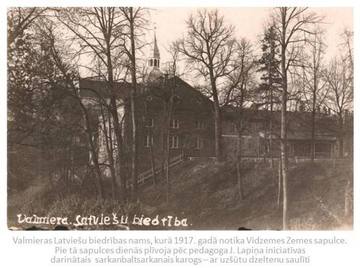
1917 m. kovas – svarbus mėnuo Valmieros ir Latvijos istorijoje
1917 metų kovą, likus daugiau nei metams iki Latvijos valstybės paskelbimo, Valmieroje buvo įkurta Vidžemės laikinoji žemės taryba, kuri priėmė nutarimą dėl Latvijos autonomijos ir apsisprendimo teisių. Tarybos įkūrimo dieną posėdžio vietoje pirmą kartą buvo iškelta raudona, balta ir raudona vėliava.
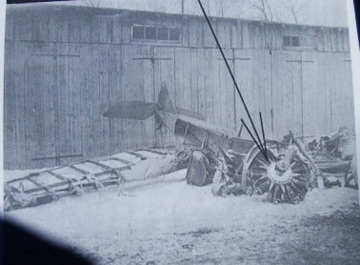
Apie numušto lakūno kapą
Pirmojo pasaulinio karo metais buvo masiškai naudojamos naujos techninės priemonės (kulkosvaidžiai, nuodingos dujos, tankai, povandeniniai laivai, artilerijos užtvaros taktika, liepsnosvaidžiai, koviniai lėktuvai), dėl kurių žuvusiųjų skaičius išaugo iki neregėto lygio. Teigiama, kad paskutiniai riterių mūšiai vyko ore, nes tarp lakūnų karaliavo abipusė pagarba ir nerašytos taisyklės. Karo pradžioje, kai lėktuvai dar nebuvo aprūpinti ginklais ir skrisdavo į stebėjimo misijas, priešingų pusių pilotai net sveikindavosi ore. Tačiau vėliau jie informuodavo priešingą pusę apie priešo pilotus, kurie buvo numušti ar paimti į nelaisvę skrisdami į priešo aerodromą ir įmetę popieriaus lapą į smėlio maišą ar net pagautų pilotų pranešimą.

Zlėkų tragedijos vieta Latvijos istorijoje vis dar neaiški
Antrojo pasaulinio karo metais, kai didžiąją Latvijos dalį jau valdė Sovietų Sąjunga, o Kuržemę valdė Hitlerio Vokietijos vicekaraliai, Kuržemėje vadinamieji kureliečiai pradėjo kovą dėl Latvijos valstybinės nepriklausomybės atkūrimo.
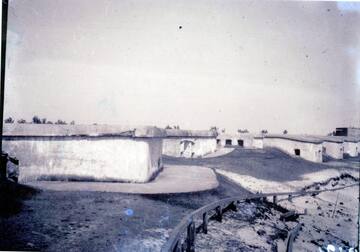
Kariuomenės buvimas Mangalsaloje
Ryškūs įspūdžiai iš Latvijos kariuomenės buvimo Mangaļsaloje yra ryškūs mano prisiminimuose. Aprašyti fortai bei Sapieri pastatytas gelžbetoninis įtvirtinimas. Prisiminimai aprašo karių kasdienybę, gyvenimo ritmą, iliustruoja Mangalsalos aplinką. Lanko Mangaļsala ir Latvijos kariuomenės kariai
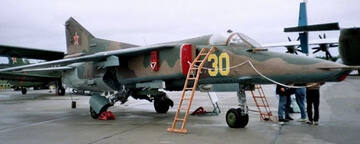
Mig-27D lėktuvas sudužo Zvārdės poligone ir Ledurgoje
1992 m. pradžioje du sovietų gamybos Rusijos „kariniai“ lėktuvai vieną dieną, 40 minučių skirtumu, mįslingomis aplinkybėmis nukrito Zvārdės poligone ir Ledurgase.
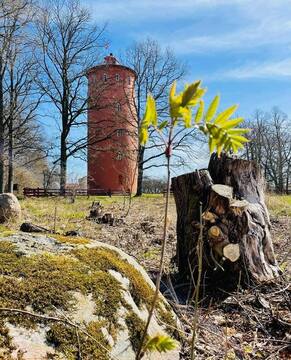
Šlyterės netikras švyturys
Karų metu priešui apgauti buvo naudojami įvairūs metodai. Laivams jūroje apgauti buvo sukurti netikri navigaciniai ženklai, kurių vienas galėjo būti prie Šliterės švyturio
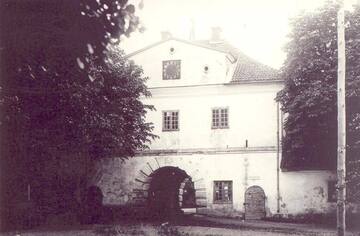
19-metės Raisos Ahmedejevos istorija apie žvalgybinį mūšį 1945 metų vasario 14 dieną prie Priekulės
Baškirų kilmės Raudonosios armijos kario Raiso Ahmadejevo (19 m.) pasakojimas apie sovietų armijos pasirengimą Priekulės puolimui ir žvalgybiniam mūšiui Piekulėje 1945 m. vasario 14 d.
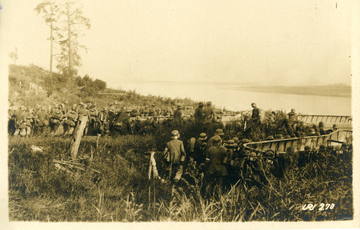
Mūšiai prie Mažosios Juglos upės/Rygos operacija
Pasakotojas aprašo Rygos operacijos pradžios įspūdžius, kai vokiečių kariuomenės artilerija pradeda apšaudyti Rusijos kariuomenės pozicijas. Apibūdinamas Rusijos kariuomenėje vyraujantis chaosas ir Latvijos lankininkų nuotaikos prieš kautynes.
Kruvinos grindys Telšių KGB rūsyje
Telšių KGB kalėjimo kalinių prisiminimai atskleidžia siaubingas kalinimo sąlygas - nuo fizinių kankinimų iki nežmoniškų gyvenimo sąlygų perpildytose kamerose.
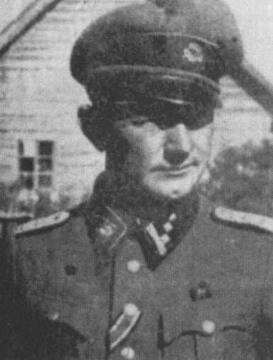
Pēteris Čevers - nacionalinis partizanas ir partizanų grupės vadas
Pēteris Čevera - nacionalinis partizanas ir tautinių partizanų grupės vadas
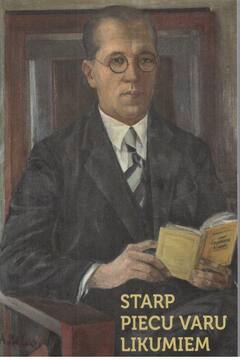
Jāņo Sūno prisiminimai apie laiką, praleistą Grieze filtravimo stovykloje
Advokatas Jānis Sūna savo autobiografinėje knygoje paskelbė prisiminimus apie Grieze filtravimo stovykloje praleistą laiką.
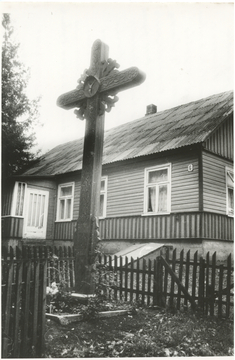
Paskutinė poeto kelionė
1944 m. spalio 7 d., tą pačią dieną, kai vyko Sedos kautynės, tragiškai žuvo jaunas poetas Vytautas Mačernis, bandęs pasitraukti į Vakarus.
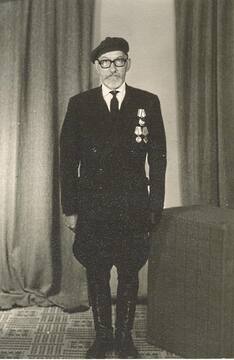
Buvusio legiono leitenanto - čekų agento Arvīdo Gailīčio vaidmuo likviduojant Pēterio Čeverso grupuotę
Kapitonas Pēteris Čeversas ir dar septyni partizanai buvo sugauti 1950 metų lapkričio 1 dieną Engurės miško masyve, kur visai atsitiktinai netoliese buvo įsikūrusi netikra partizanų grupė, vadovaujama buvusio legiono leitenanto Arvīdo Gailīčio (agento-kovotojo slapyvardis „Grosbergs“). Jame buvo Latvijos TSR VDM operatyvininkai ir agentai-kovotojai, kurie apsimetė „miško broliais“.
Šarnelės kaimo gyventojų žygdarbiai
Antrojo pasaulinio karo metais dvi Šarnelės kaimo šeimos – Striaupiai ir Kerpauskai – nepaisydamos mirtino pavojaus gelbėjo žydų gyvybes. Striaupių šeima išgelbėjo net 26 žmones, tarp jų – devynias šeimas, o Kerpauskų sodybos miške buvo įrengta slėptuvė Alsėdžių žydo kailiadirbio šeimai.
Rēzeknes bombardavimas 1944 m
1944 m. Velykas įvyko Rezeknės bombardavimas, dėl to buvo sugriauta didelė dalis miesto pastatų, žuvo dešimtys civilių, o dar keli tūkstančiai liko be pastogės. Žmonės, kurie savo kailiu patyrė šiuos įvykius ir gali apie juos papasakoti, tuo metu buvo tik vaikai. Vienas iš jų yra ir šios istorijos autorius.
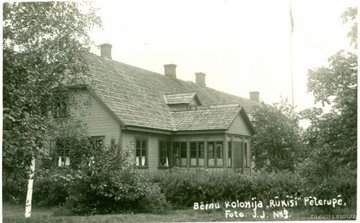
Apie vaikų kolonijos „Rūkiši“ įvykius prieškario ir Antrojo pasaulinio karo metais
Iš partizanų rėmėjų šeimų buvo atimti vaikai. 1943 m. kovo mėn. Salaspilio lageryje buvo 1100 vaikų. Nuo tymų, vidurių šiltinės ir kitų ligų mirė apie 250 vaikų, keli šimtai vaikų buvo perkelti į aplinkinių parapijų ūkius, apie 300 vaikų atsidūrė vaikų globos namuose Jūrmaloje, Igatėje ir Saulkrastuose Rygoje.
Saulkrastuose vaikai atvyko į Latvijos pagalbos vaikams draugijos „Rūkišų“ vaikų koloniją.
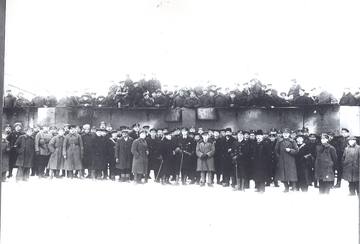
Latvijos kariuomenės šarvuotas traukinys Nr.5 arba "Kolpaks"
Latvijos kariuomenės šarvuotas traukinys Nr.5 arba „Kalpaks“ buvo lengvasis šarvuotas traukinys Latvijos ginkluotosiose pajėgose 1919 m.
Kaimri gynybos linijos pabaiga
1941 m. rugsėjo 16 d., dėl sėkmingo vokiečių kariuomenės puolimo Muhu ir Saremos regione, buvo pradėtas darbas ties gynybos linija tarp Lõpe, Teesü ir Kaimri kaimų.
Tartu KGB kamerų prisiminimai
Studentų pasipriešinimo organizacijos Mėlyna-Juoda-Balta narys Ülo Raidma prisimena laiką, praleistą kamerose.
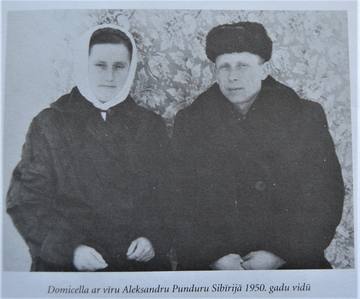
Miško dukra Domicella nykštukė (Liucija)
Domicella Pundure – 90. 2018 metų gegužės 3 dieną Rygos pilyje ji iš prezidento Raimondo Vējonio rankų gavo Viesturo ordiną už ypatingus nuopelnus tautiniam pasipriešinimo judėjimui ir šalies nepriklausomybės gynimui. Domicella Pundure yra paskutinis likęs Stompaku pelkės mūšio liudininkas.
"Vėjas. Nežiūra. Ir Livonijos vėliava." (fragmentas) - Vaiduoklių laivai ir spygliuota viela
Guntos Kārklinos prisiminimai apie sovietmetį Livonijos pajūryje – kaip ten atsirado valčių kapinės?
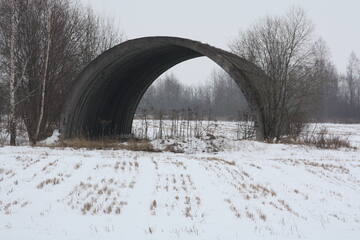
Karinis aerodromas prie Tukumo
Šiandien vos matomuose žole apaugusiuose angaruose prie greitkelio į Tukumą sovietmečiu stovėjo kariuomenės naikintuvai. Net ir tais laikais aerodromas su angarais buvo užmaskuotas, o neišmanėliai apie tai neturėjo jokio supratimo.
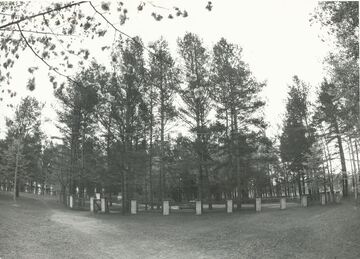
2500 nelaimingų sielų gyvenimą baigusių Mažeikiuose
1941 m. liepos pabaigoje Mažeikiuose prasidėjo masinės žydų žudynės, kurias pradėjo vokiečiai, o vėliau tęsė vietos baltaraiščiai. Žmonės buvo vedami grupėmis į žydų kapines, verčiami nusirengti ir sušaudomi prie iškastų duobių. Per kelias dienas nužudyta daugiau kaip 2 000 žydų iš Mažeikių ir aplinkinių miestelių.
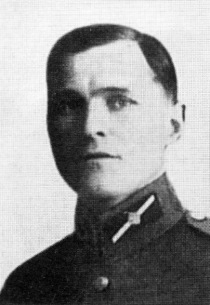
Stebuklingas pulkininko leitenanto Eduardo Graudinio pabėgimas nuo sušaudymo
1944 m. lapkritį vokiečių okupacinės valdžios karo lauko teismas nuteisė 8 generolo Kurelio grupės štabo karininkus, trys štabo karininkai dėl įvairių priežasčių buvo atleisti. Pulkininkui leitenantui pavyko pabėgti nuo sušaudymo, bet Graudinį „trypė“ Vokietijos koncentracijos stovyklų sistema.
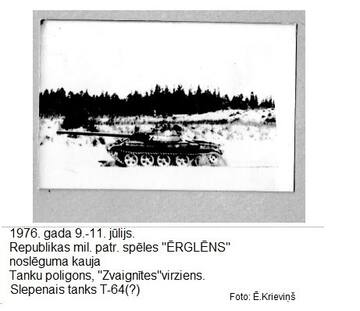
1976 m. liepos mėn. karinės-patriotinės žaidynės „Orlenok“ tankų poligone prie Irbenės
1976 m. liepos mėn. kariniai-patriotiniai žaidimai „Orlenok“ tankų poligone prie Irbenės, kuriuose dalyvavo 17-metis Evalds Krieviņš ir slapta su Sme8M fotoaparatu fotografavo žaidimus, įrangą ir net Irbenės anteną.
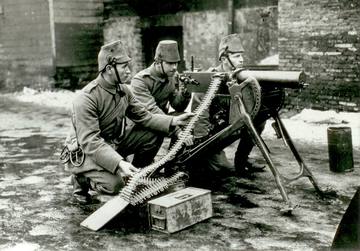
Apie Suomijos jėgerius Latvijoje
Suomijos jėgerių istorija įdomi tuo, kad ji itin panaši į Latvijos karių likimus Pirmajame pasauliniame kare ir didelę jų svarbą kuriant tautinę valstybę. Pirmasis pasaulinis karas taip pat buvo galimybė suomiams padėti pamatus Suomijos nepriklausomybei ir jos kariuomenės sukūrimui. Šaltinis aprašo įvykį, kai Latvijoje atidengiamas paminklas Suomijos jėgeriams.
Kodėl olimpinės žaidynės nevyko Latvijoje...ar povandeninio laivo remontas Daugavgryvoje, Baltijos karinio jūrų laivyno remonto dirbtuvėse
Kai Maskva ruošėsi 1980 m. vasaros olimpinėms žaidynėms, iškilo klausimas, kur surengti buriavimo varžybas? Pasirodo, pasirinkimas iš pradžių krito į Rygą, nes joje yra idealios sąlygos plaukioti Rygos įlankoje ir miestas taip pat senas ir gražus, nenuvils. Tačiau kai kurie rygiečiai vis dar prisimena arba jaunoji karta skaitė internete, kad Ryga „neva“ atsisakė šios didelės garbės ir todėl konkursas buvo perkeltas į Talino priemiestį Piritą. Estai gavo didžiulį finansavimą ir pastatė naują bei modernų buriavimo ir poilsio kompleksą, kuriuo pasigrožėti po olimpiados ateidavo kiekvienas latvis.... Tačiau dabar paaiškėjo vienas įdomus niuansas - tapo žinoma, kodėl Ryga atsisakė šios garbės...
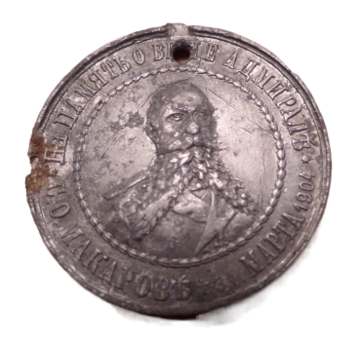
Kieme rastas Admirolui Makarovui skirtas atminimo ženklas
Maža karinė relikvija gali papasakoti didelę istorinę istoriją. Ir nors ženklelis reprezentuoja Rusijos ir Japonijos karo metu vykusius įvykius, jis parodo languotą karo istoriją ir mūsų latvių šaulių įsitraukimą į kitus karinius konfliktus tiek prieš Nepriklausomybės karus, tiek po jų.
70 Kalevipoego metų. Ar pagaliau Kalevipoegas grįš namo?
Pasakojimas apie nuotaikas Tartu ir tarp studentų iškart po Kalevipoego statulos nuvertimo 1950 m.
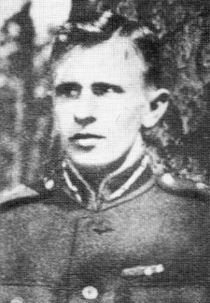
Priežastys, dėl kurių apdovanojimas buvo suteiktas šarvuočio vadui A.Klestrovui
Sėkmingai atremęs priešo puolimą, ginkluoto traukinio vadas A.Klestrovas krenta ir pulkininkas Dankeris išdavė pagrindą apdovanojimui gauti.
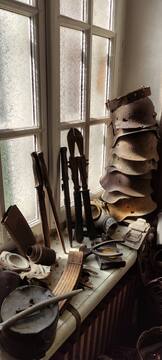
Apie rastus karo daiktus
Šiuolaikinėje Latvijoje įvairių muziejų kolekcijas papildo asmeninės privačių asmenų kolekcijos, kurios dažnai yra viešai eksponuojamos ir yra prieinamos kiekvienam. Daugelio žmonių pomėgis yra antikvariniai daiktai, įskaitant su karo istorija susijusius daiktus. Dažnai lankytojai neturi supratimo apie šių dalykų kilmę. Ar jie staiga atsirado? Visais atvejais tai kelerių metų darbas ir įdomi, asmeniška istorija apie vieno žmogaus pomėgius kolekcionuoti daiktus kurti, pavyzdžiui, muziejui. Pasakotojas aprašo savo asmeninę patirtį, suteikdamas skaitytojui vaizdą apie situaciją Latvijoje po Antrojo pasaulinio karo. Įvairių kariuomenių palikimas ir ūkininkavimui reikalingų žaliavų trūkumas verčia žmones ieškoti kūrybiškų būdų, kaip išgyventi praktiškai bet ką. Laikui bėgant tai, kas ūkyje nenaudinga, tampa vertingais, istoriniais eksponatais, pasakojančiais apie Latvijos ir jos žmonių patirtį.
1949 metų tremtis Valgamiečių šeimoje
1949 m. kovo 25 d. įvyko antroji didelė trėmimų iš Baltijos respublikų banga. Estijoje į Sibirą buvo išsiųsta beveik 21 000 žmonių (7 500 šeimų). Pasakojimas apie šeimą Valgos apskrityje.
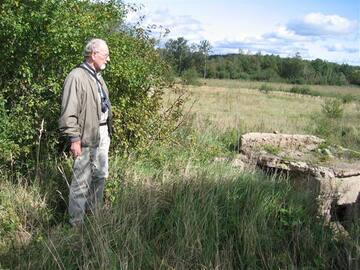
19-mečio Alfonso Volgemuto pasakojimas apie žvalgybinį mūšį 1945 metų vasario 17 dieną prie Priekulės
Alfonsas Volgemutas buvo 19 metų vaikinas, radijo operatorius ir tarnavo nacistinės Vokietijos armijoje.
"Iš šios operacijos niekas negrįžo ir nėra žinoma, ar yra išgyvenusių. Aš pats dalyvavau tame kare būdamas 19-metis radistas ir esu vienas iš 2, vėliau 3 išgyvenusiųjų, kurie pateko į rusų nelaisvę. Noriu įvykius atspindėti iš savo patirties."
Atsiminimai iš palikto dienoraščio – tarnybos Ķegumo HE
Janis Jaunozolins. „Prisiminimai iš dienoraščio, palikto užsienyje“ (1944 08 16-1946 10 13.) Fragmentai.
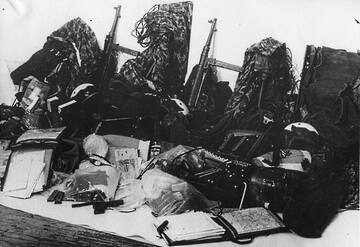
Alfredas Riekstinys, pravarde „Imants“, mirė dėl sovietų dvigubo agento išdavystės
Latvių legionierius Alfredas Riekstinys po Antrojo pasaulinio karo buvo užverbuotas dirbti su JAV žvalgybos agentūra CŽV.
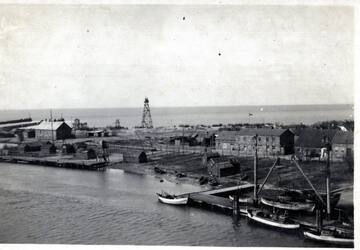
Pavilostnieki
Pavilostos gyventojai Aina Jakovļeva ir Irina Kurčanova dalijasi prisiminimais apie sovietmetį Pavilostoje.
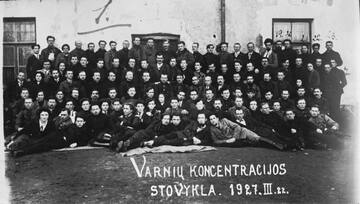
Varnių stovykla: kur komunistai ir krikščionys demokratai žaidė šachmatais
1926-1931 metais veikusi Varnių koncentracijos stovykla tapo ypatinga vieta, kur kartu kalėjo komunistai, krikščionys demokratai ir net smulkūs chuliganai - visi, kas galėjo kelti grėsmę Smetonos režimui.

Sovietų armijos neįgyvendinti planai Kuržemės pakrantėje Melnsilyje ir Gipkoje
Baigiantis Antrajam pasauliniam karui Melnsilyje buvo dislokuota vokiečių karinio jūrų laivyno 532-osios artilerijos divizijos 6-oji baterija, tačiau Raudonoji armija šiai vietovei turėjo savų planų, kurie taip ir nebuvo įgyvendinti iki Vokietijos kariuomenės kapituliacijos 1945 m. gegužę.
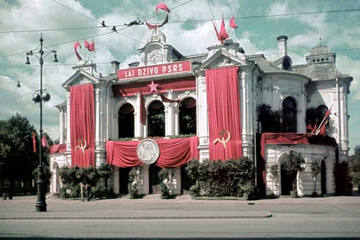
Apie Latvijos okupaciją
1940 m. nepriklausomos Latvijos valstybės egzistavimą nutraukė Sovietų Sąjungos įvykdyta okupacija ir aneksija arba įjungimas į Sovietų Socialistinių Respublikų Sąjungą (SSRS).
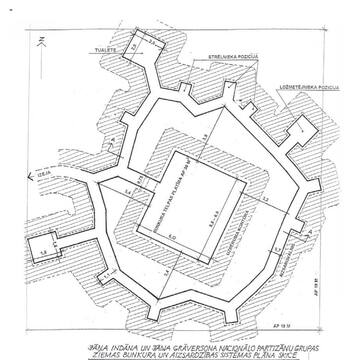
Sėlių miško brolių gyvenvietė Sūpės pelkėje
Sūpės pelkė siejama su tautinių partizanų gyvenviečių ir kovų vietomis, susiformavusiomis žmonių ir vietovių sąveikoje. Jis aprašytas tremtinio latvių rašytojo Alberto Eglišo baladėje apie įvykius jo gimtojoje Sūpes purvos dalyje „Samanos ir dumblas“ – duoklė Sūpes purvos partizanams:
..." 1945 m., Švytintis ruduo pelkėje -
Per Poklevinskos gimtadienį Lieljānis vakarienės metu dalijasi:
gluosniuose fermentuotas alus,
Romulanai augintų sviestą,
Sausa motininė kmynų duona,
džiovintas kumpis Markutane,
Ir Stuchka svogūnai,
Ildzeniece sūris.
Dervingose kambario sienose
Žaibo sustingusios širdys,
Ir vienuolikoje sielų pulsuoja...
Į žemę įkastos šaknys...“
Ši praeities interpretacija su įvykiais po Antrojo pasaulinio karo apėmė žmonių liudijimą, dvasios ir vertybių sistemos išraišką. Tai primena žmonių suteiktą paramą nacionaliniams partizanams, kurių okupacinė valdžia negalėjo taip lengvai nugalėti.
Galvijai Piirio raketų bazėje
Vietinė karvių ganykla buvo netoli raketų bazės.
Baskų kilmės lakūnas Benito Aguirre
Pasakojimas apie baskų lakūną Benito Aguirre (teisingas pavadinimas Ignacio Aguirregoicoa Benito), kuris buvo numuštas virš Mustvee.
Olevo Metsmaa prisiminimai
Hidroplanų bazė buvo pastatyta ant Papissaar, o priešlėktuvinės baterijos - Kirassaar.
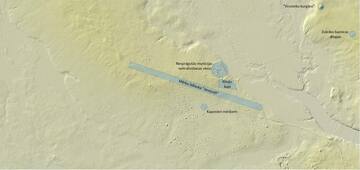
Zvardinekos vaikystė bombų sprogimų šešėlyje – Daugiakampės vasaros
Vaikystę praleidęs netoli Zvārde taikinio poligono, apsuptas sprogimų ir skrendančių reaktyvinių lėktuvų, vis tiek kartais savaitgaliais galėdavau patekti į poligoną. Sovietų armijai pasitraukus, žemė buvo nusėta bombų krateriais ir daugybe sprogstamųjų užtaisų ne tik poligono laikų, bet ir Antrojo pasaulinio karo laikų.
Žvaigždžių eksponatas – šarvuotas automobilis
Tarpukariu Arsenalo karinėje gamykloje buvo gaminami pačios Estijos šarvuočiai. Vienas jų egzempliorius yra Jõgewa karo muziejuje.
Slaptas veterinaras
Veterinarijos gydytojas Stanislovas Mikašauskas, dirbęs Plokštinės karinėje bazėje, dalijasi prisiminimais apie neįprastą patekimą į bazės teritoriją ir griežtą paslapčių saugojimą net ir neformalioje aplinkoje.
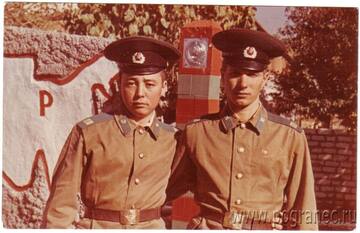
Kolkos pakrančių apsaugos apžvalgos bokštas
Paskutinėse Kolkos rago pušyse pasislėpęs pasieniečių bokštas, kuriame sovietmečiu nuolat buvo pasieniečių postas, o šalia esantis nedidelis mūrinis pastatas dabar apleistas ir griūvantis.
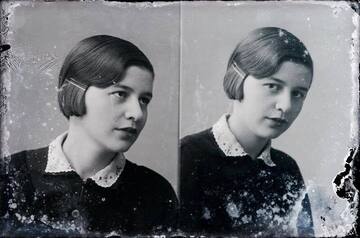
Meilės istorija, kurią užbaigė karas
Ši istorija pasakoja apie Prano Laucevičiaus ir Rūtos Gurvičiūtės meilę ir išlikimo kovą Antrojo pasaulinio karo metais. Ji liudija apie drąsą, pasiaukojimą ir mirtį, kai karo žiaurumai užgniaužė tautybių ribas, bet ne žmonių jausmus.
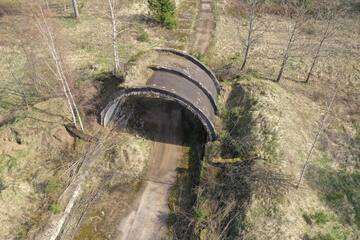
Branduolinės ginkluotės pėdsakais Šateikių girioje
1960-1978 m. laikotarpiu Plungės rajone, Šateikių kaimo miškuose veikė antžeminė raketų paleidimo bazė, kurioje buvo dislokuotos vidutinio nuotolio termobranduolinės raketos R12U. Raketas išgabenus, bazėje dislokuota 384-oji didelio galingumo artilerijos brigada. Jos žinioje buvo savaeigės 203 mm kalibro haubicos 2S7 „Pion“ ir daugybė įvairios kitos ginkluotės, kuri kainavo gyvybes.
Tisos raketų bazė
Tisos raketų bazė buvo viena iš slaptų strateginių SSRS karinių bazių, kurioje buvo dislokuotos balistinės raketos R12.
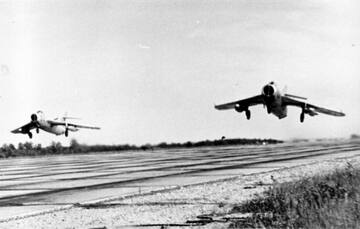
Ar Tukumo aerodrome buvo palaidotos branduolinės galvutės?
Buvęs sargybos vadas Aivaras Skurstenis sutiko atviram pokalbiui su Tukumo rajono laikraščiu „Neatkarīgās Tukuma Ziņas“. Kadaise jis buvo atsargos karininkas ir lauko sargyba, o 1993 metais jam buvo pasiūlytos sargo pareigos Laimonio Mucenieko vadovaujamoje žemės ūkio bendrovėje „Durbė“. Buvo saugomas biuras – Līvānų namas. Tokia istorijos pradžia.

Plungės žydų likimas
1941 m. vasarą Plungėje buvo žiauriai sunaikinta beveik visa vietos žydų bendruomenė daugiau nei 1800 žmonių. Žmonės buvo kalinami baisiomis sąlygomis, marinami badu ir galiausiai sušaudyti Kaušėnų miške. Masines žudynes vykdė vietiniai kolaborantai.
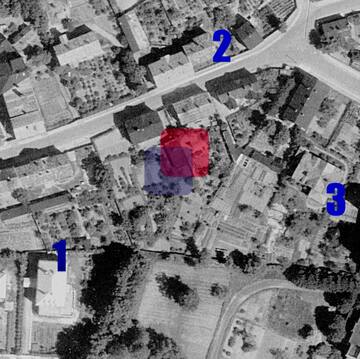
Incidentas Ormaņu gatvėje
Sovietų karinio sraigtasparnio katastrofa Rygoje, Agenskalne, Ormaņu gatvėje
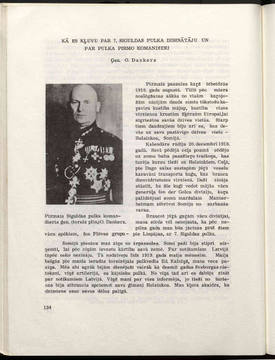
7. Siguldos pėstininkų pulko formavimas
1919 m. birželio 20 d. Naukšėnų dvare, Rūjienos apylinkėse, pagal Šiaurės Latvijos brigados vado pulkininko Jorgio Zemitano įsakymą pradėtas formuoti 7-asis Siguldos pėstininkų pulkas. Iš pradžių iš Šiaurės Latvijos brigados rezervinio bataliono buvo suformuota nedidelė kovinė grupė, kurią sudarė 22 karininkai ir 1580 karių, kuri pirmojo vado Oskaro Dankerio garbei buvo pavadinta Dankerio divizija. Po kelių dienų dalinys buvo įtrauktas į 3-iojo Jelgavos pulko 2-ąjį batalioną, o rugpjūčio 23 d., papildžius kuopa, į 7-ąjį Siguldos pėstininkų pulką.
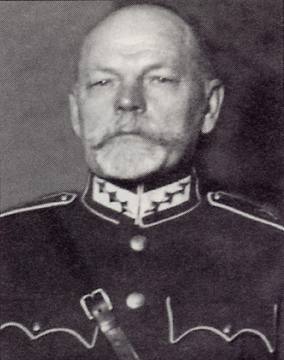
Apie pirmąjį Latvijos kariuomenės vadą Dāvidą Sīmansoną
Knygoje „Latvijos kariuomenės vadai“ esantys rašiniai įtikina, kad istorijai didelę įtaką daro konkretūs asmenys. Nors svarbiausių istorinių įvykių epicentre jie buvo neilgai, tikri Latvijos patriotai, turėdami turtingą karinę patirtį, sugebėjo daug nuveikti formuojant ir stiprinant Latvijos kariuomenę bei istorinių įvykių lūžio momentuose.
Ši istorija pasakoja apie pirmąjį Latvijos kariuomenės vadą Dāvidą Sīmansoną (1859-1933).
Kolkos pasienio juostos prisiminimai
Kolkiškės Birutės Freimanės prisiminimai apie pasienio zoną.
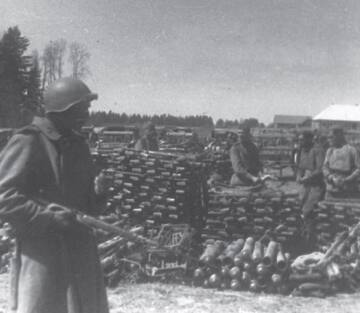
Ezeroje kilusio Jānio Miesnieko prisiminimai apie Antrojo pasaulinio karo pabaigą Ezeroje
Istoriškai reikšmingame pastate įkurta Ežerės kultūros istorijos ir kraštotyros medžiagos saugykla „Muitinės namai“. 1945 m. gegužės 8 d. čia buvo pasirašytas Kuršo fronte apsuptų nacistinės Vokietijos kariuomenės dalinių kapituliacijos aktas.
Prisiminimais apie tos dienos įvykius dalijasi buvęs Ezer gyventojas Jānis Miesnieks (g. 1930 m.).

Kaip Latvijos valdžios pareigūnai kvailino Pampalio šalininkus bolševikus
Buvęs Pampalių mokyklos direktorius (iki 1959 m.) Alfredas Brūnsas asmeniškai parašė įspūdingą knygą apie Pampalių mokyklos istoriją ir su ja susijusius istorinius įvykius su autentiškomis nuotraukomis. Alfredas Brūns knygoje aprašo Nepriklausomybės kovų įvykius Pampaliuose, išsamiai aprašydamas įvykius, kuriuose dalyvavo Latvijos valstybės veikėjai, bolševikų rėmėjai, vokiečių kariuomenės veiksmai ir kt.
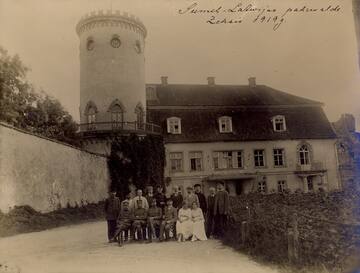
Cėsių Naujoji pilis – sienos, sukūrusios Latvijos valstybės saugumą ir tebesaugančios asmens dokumentus
Cėsių Naujoji pilis pastatyta ant karinio įtvirtinimo – viduramžių pilies – griuvėsių. Tačiau tai ne vienintelė pastato karinė reikšmė.

Išdaigos ir žaidimai su karine amunicija
Po Antrojo pasaulinio karo Latvijos žemė buvo pilna fizinių karo liekanų. Tai buvo daugybė sviedinių, nesprogusių minų ir tiesiog šovinių. Dar ir dabar, ypač tose vietose, kur vyko aktyvus karas, randama nesprogusių minų, o tai didelė retenybė, tuo tarpu pokario metais šie sviediniai buvo gyventojų kasdienybė ir net vaikų žaislai miškuose ir net kiemuose.
Medžioklė Saremos saloje
Saremoje lankėsi pasaulinio garso sovietų ir rusų šaulių ginklų inžinierius.
Aptarnavimas Mõntu baterijoje Nr. 458
Atsiminimai apie karį, kuris tarnavo baterijoje
Nepriklausomybės kovų paminklas Mustjaloje
Mustjalos Nepriklausomybės karo memorialas buvo paminklinis akmuo Estijos Respublikos laikais.
Rusijos armijos išvedimas iš Lietuvos 1993 m.
1993 m. rugpjūčio 31 d. paskutinis Rusijos armijos karinis ešelonas pravažiavo Kenos geležinkelio stotį, oficialiai užbaigdamas beveik 50 metų trukusią sovietinę karinę okupaciją Lietuvoje.
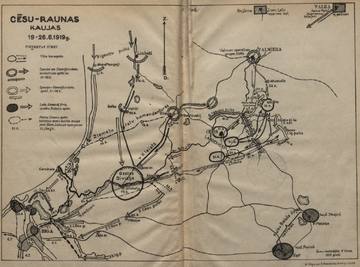
Cėsių mūšio pradžia, eiga ir pabaiga
Pergalei Cėsių mūšyje buvo lemta tapti lūžiu latvių ir estų kovoje už savo šalies nepriklausomybę. Ši pergalė padarė tašką Andrievo Niedros vyriausybės ir vokiečių generolo Rüdigerio von der Goltzo planams užkariauti Baltijos šalis. Vietoj to Liepojoje savo veiklą atnaujino Laikinoji Latvijos vyriausybė, vadovaujama Kārlio Ulmanio.

Kaip Raudonosios armijos kariai sudegino Remtės bažnyčią
Po Vokietijos ir kariuomenės grupės „Kurlandas“ kapituliacijos 1945 m. gegužės 8 ir 9 d., daugelyje Kuržemės vietų nugalėtojai įvairiai šventė savo pergalę. Šių iškilmių metu buvo sudeginta Remtės bažnyčia. Bažnyčios varpininko šeima visą okupacijos laikotarpį bažnyčios varpą laikė savo kieme.
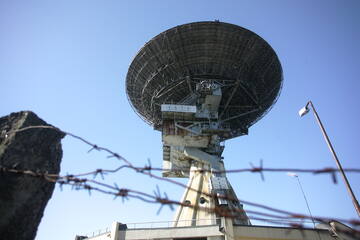
Irbenės radijo teleskopų pažeidimai
Prieš išvykdama iš Irbenės, sovietų kariuomenė sugadino visas radijo teleskopų sistemas
Netikras gintaras Liepojos pusėje
Jau daugiau nei dvidešimt metų Liepojos pakrantė pavojinga dėl netikro gintaro, kurį jūra per pavasario ir rudens audras linkusi ypač dosniai išplauti iš savo gelmių.

Apie 3-iojo Kaukazo šaulių pulko karius, sušaudytus I-ojo pasaulinio karo metais Jēkabpilyje už kurstymą nepaklusti įsakymams
1916 m. gegužės 18 d. Gėgerių pusdvario griuvėsiuose (~7 km į pietus nuo Jēkabpilio už Brodiemo) 20.30 val. už kurstymą nepaklusti įsakymams buvo sušaudyti III Kaukazo šaulių pulko kariai. Nuosprendžio vykdymui vadovavo praporščikas Ravnyalichevas.
Gyvenimas Antrojo pasaulinio karo metais Kegumo pusėje
Prisiminimai apie dabar tolimą karališkąją epochą mirga. Vyresniajai kartai tai primintų jų pačių išgyvenimus, o jaunesnei kartai tai gali nuobodžiauti.
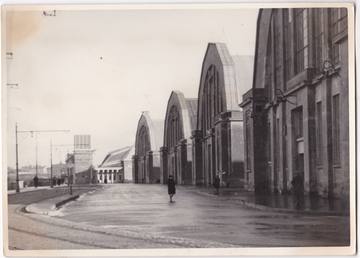
Rygos centrinio turgaus angarai
Tuo metu, kai buvo pastatytas Rygos centrinis turgus, jis buvo vienas moderniausių turgų pasaulyje. Jis buvo paremtas I pasaulinio karo vokiečių kariuomenės dirižablių angarų metalinėmis konstrukcijomis. Autorius aprašo Rygos centrinio turgaus statybos prielaidas ir statybos darbų mastą, todėl tai yra vienas ambicingiausių pokario pastatų Latvijoje ir vienas moderniausių turgų pasaulyje.

Ventspilio 46-osios pakrančių gynybos baterijos ugnies valdymo bokšto istorija
Ventspilio karinio paveldo objektas yra unikalus, nes tai vienas iš nedaugelio pakrančių gynybos statinių Latvijoje ir Baltijos šalyse, vaizduojantis Antrojo pasaulinio karo įtvirtinimų istoriją. Jis išskirtinis ir tuo, kad tai karinis objektas, Sovietų Sąjungos pastatytas Latvijos Respublikos nepriklausomybės metais ir savotiškai simbolizuoja mažos šalies nesugebėjimą susidoroti su supervalstybėmis Antrojo pasaulinio karo išvakarėse. Tai vienintelė taip gerai išlikusi pakrančių gynybos baterija, be istorinių sluoksnių ir pilnai pastatyta. Svetainėje parodyta visa sovietinės karinės koncepcijos raida nuo 1939 m. iki sovietų kariuomenės išvedimo 1994 m.
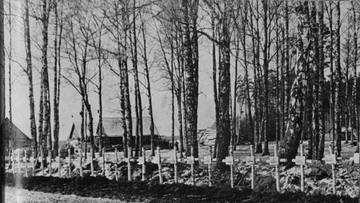
Mūšiai Kuržemės tvirtovėje prie Lestenės
Pasakotojas aprašo savo įspūdžius apie mūšius aplink Lestenę ir Latvijos 19-osios divizijos svarbą mūšiuose.
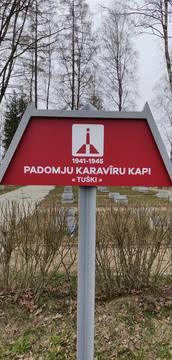
Sovietų armijos karių ekshumavimas Blīdenės valsčiuje 2019 m
2019 metų liepą Karių paieškos grupė „Leģenda“ Blīdenės valsčiaus miške iškasė 66 karių pelenus. Dėl paviršutiniškumo ar aplaidumo sovietmečiu dauguma šių karių priskaičiuojami kaip oficialiai perlaidoti sovietiniais metais. Šių karių pavardės net iškaltos antkapiuose Tuškų brolių kapinėse.
Tukuma rezervinio aerodromo valdymas 90-aisiais.
Išvykus sovietų okupacinei kariuomenei, prasidėjo daugelio buvusių karinių bazių plėšikavimas. Sovietų kariai stengėsi kuo daugiau išvežti ir palikti nualintą infrastruktūrą. Kariuomenei pasitraukus, šias bazes toliau plėšė civiliai ir išnaudojo buvusią karinę infrastruktūrą.
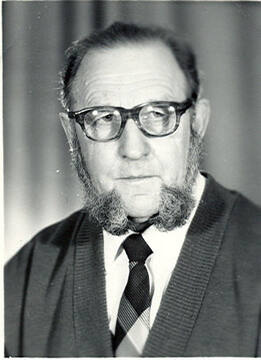
Kraštotyrininkas Žanis Skudra už „Okupuotos Latvijos dienoraštį“ gavo 10 metų nelaisvės
Žanis Skudra visą savo laisvalaikį skiria krašto istorijai, o visas atostogas – kelionėms po Latviją. Taip buvo renkama medžiaga, nuotraukos, sukurta „Okupuotos Latvijos dienos knyga“, kurią Stokholme latvių nacionalinis fondas leidžia Jānis Dzintars slapyvardžiu.
1978 m. birželio 7 d. Žani Skudra buvo suimtas Taline, o tų pačių metų lapkritį Rygos Aukščiausiasis Teismas nuteisė jį kalėti dvylikai metų už išdavystę ir šnipinėjimą.
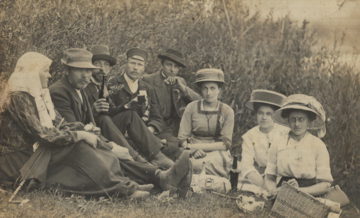
Neteisminis civilių šaudymas Liepojos „Mėlynajame stebukle“
Neteisminės žudynės Latvijos teritorijoje karo metu, 1941 m. birželio pabaigoje ir liepos pradžioje, buvo paskutinė represijų ir smurto apraiška pirmajame komunistinės okupacijos etape, kuris baigėsi nacistinės Vokietijos kariuomenės įžengimu į visą Latvijos teritoriją.
Susišaudymo priežastis buvo baisi ir tragiška – kalinių nebebuvo galima perkelti į Rusiją, tačiau palikti gyvų jų nepavyko. Dėl to Liepojoje karo metais taip pat buvo vykdomos neteisminės egzekucijos gyventojams, panašiai kaip Rygos centriniame kalėjime, Valmieros kalėjime, Valkos ir Rezeknės milicijoje bei Greizā kalne prie Ludzos. Liepojoje šis sovietinės okupacinės valdžios nusikaltimas buvo įvykdytas „Mėlynajame stebukle“ – Liepojos policijos pastate, Respublikos gatvėje 19.
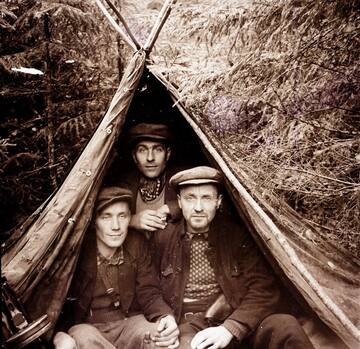
Apie paskutinę Vidžemės partizanų grupę
Neįtikėtina istorija apie tai, kaip čekistai „pasidavė“ paskutinei Vidžemės partizanų grupei, prašydami išeiti iš miško.

Uždrausti švyturiai ir pajūris
SSRS laikais Šiaurės ir Vakarų Kuržemės pakrantė iš tikrųjų buvo visuomenei uždaros karinės zonos, tačiau lankytis švyturiuose ar net fotografuotis buvo draudžiama.
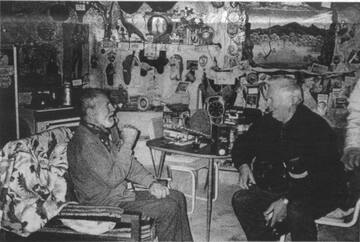
Susitikimas su Arvīdu Blumenthalsu – krokodilu Harry Kamberpedijoje
Laikraštis „Australijos latvis“ paskelbė straipsnį apie susitikimą su Arvīdu Blūmentalu jo namuose Australijoje.
(Nedidelis epizodas iš kelionės į Australijos centro ir vakarinės pakrantės šaknis kartu su Aivaru ir Benita Browne.)
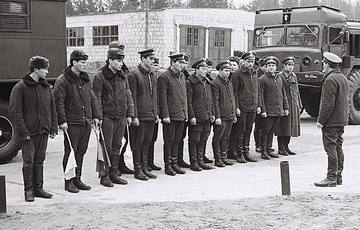
SSRS armijos bazė Marcien
Baltija buvo viena svarbiausių Sovietų imperijos gynybos linijų, vakariausias bastionas, todėl kariuomenės koncentracija ten buvo didžiulė. Manoma, kad Latvija tuo metu buvo labiausiai militarizuota teritorija pasaulyje. Tikslus kariškių skaičius nežinomas, įvairūs šaltiniai skirtingu laiku mini nuo 200 000 iki 350 000. Vien Latvijoje per 50 metų daugiau nei 700 vietų buvo dislokuoti 3009 kariniai daliniai. Viena iš tokių vietų buvo SSRS kariuomenės bazė Mārciene.
Spilvės malūnsparnių bazės prisiminimai
Spilvės oro uosto pietvakarinėje dalyje sovietmečiu buvo sraigtasparnių bazė. Jis buvo aiškiai matomas iš šalia esančių Kleistų girios kopų ir Rygos-Bolderajos geležinkelio atšakos, vedusios į Rygos lakų ir dažų gamyklą.
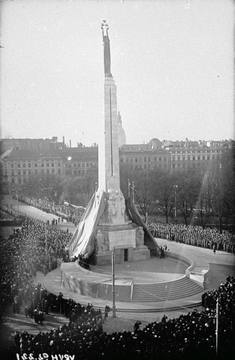
Kārlis Zāle ir Laisvės paminklas
Pasakotojas prisiminimus apie Kārli Zāli apibūdina kaip asmenį, sukūrusį žymiausius meno kūrinius Latvijoje. Aprašymas skirtas Zaalei atminti 1942 m. (K. Zaalės mirties metais). Atsiminimai parinkti K. Saale kūrybai charakterizuoti remiantis autoriaus asmeninėmis savybėmis ir pasaulio suvokimu.
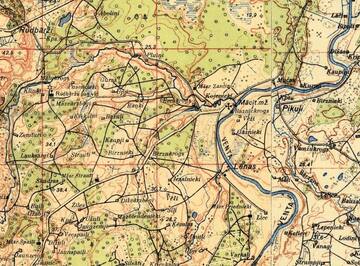
1-ojo latvių atskirojo bataliono kirtimas per Ventą 1919 m. kovo 3 d.
Vienas pagrindinių iššūkių 1-ojo latvių atskirojo bataliono daliniams buvo perplaukti užšalusią Ventos upę ir nutiesti per ją kelią.

Oskaro Kalpako bataliono mūšis ties Lielauce
Sausio 15-osios naktį Kalpakų batalionas kovėsi pirmą mūšį ties Lielauce, atremdamas raudonųjų puolimą. Tai buvo pirmasis reikšmingas Kalpako bataliono mūšis, kai pergalė kariams suteikė ypač stiprų moralinį pastiprinimą.
Pirmojo pasaulinio karo apkasai prie Mažojo sąsiaurio
Karas salose prasidėjo 1917 metų rugsėjo 29 dieną, kai vokiečių kariuomenė išsilaipino Saremos saloje prie Tagalahe.
Draugiškas Ragaciemo pasienietis
Latvijoje artėjant permainų laikui, draugiškesnė tapo ir pakrančių apsauga.
„PZ“ – pasienio zona
Vērgalės kaimo liaudies deputatų tarybos pirmininko Andrio Zaļkalno (1982-1989) prisiminimai apie gyvenimą pasienio zonoje.
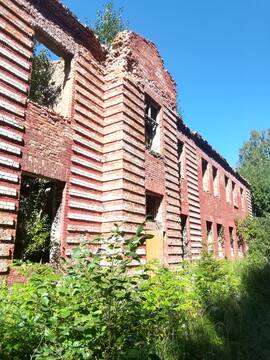
Krasnoflotsko likimas po sovietų pasitraukimo
1993 metais Latviją palikus paskutiniams sovietų kariams, Latvijos krašto apsaugos pajėgų žinią pateko ir Krasnoflocko arba Olmani pakrančių gynybos baterija. Netrukus bešeimininkį turtą pradėjo konfiskuoti pelno siekiantys ieškotojai.
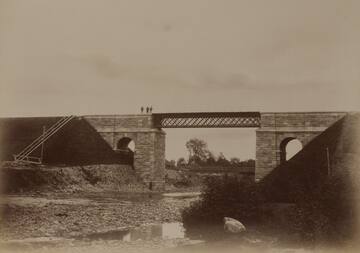
Mūšis prie tilto per Amatos upę
Cėsių mūšis yra vienas reikšmingiausių Latvijos nepriklausomybės karo etapų, taip pat užima reikšmingą vietą Estijos nepriklausomybės kovų istorijoje.
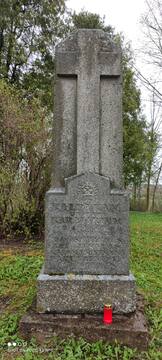
Aizpori dvaras Nepriklausomybės kare
Aizporu pusdvaras, Aizputės rajonas, Kalvenės savivaldybė, yra labiausiai į vakarus nutolusi Latvijos vieta, į kurią traukėsi pulkininko Oskaro Kalpako atskirasis batalionas.
Pusiaukelėje tarp Rudbāržių ir Kalvenės, kelio pusėje, yra Aizporės kapinės. Yra paminklas ir 12 memorialų Oskaro Kalpakos bataliono kariams savanoriams.
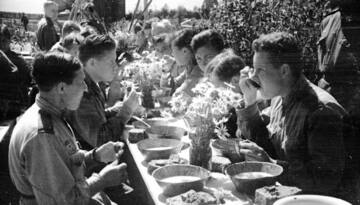
Jūlijaus Bērziņšo liudijimas apie 201-ąją (43-iąją gvardiją) Raudonosios armijos latvių šaulių diviziją 1942-1945 m.
2011 m. rudenį į rankas pamačiau Rusijoje gyvenančio latvio, buvusio 201-osios (43-osios gvardijos) Latvijos šaulių divizijos (toliau – 201-oji latvių šaulių divizija; divizija) kario Jūlijaus Bērziņa (1900–po 1963 m.) prisiminimai apie 18-osios Latvijos karių parduotą Raudonosios armijos istoriją. Vokiečių ir SSRS karas (1941–1945) parašytas ranka į dvi sąsiuvinius rusų kalba. Šie prisiminimai taip pat nebuvo užsakomieji darbai.
Minos, bombos, torpedos ir cheminis ginklas Baltijos jūroje
Pirmosiomis 2010 m. vasario dienomis Švedijos televizijos kanale SVT pasirodė naujienos, kurios sukrėtė ir labai nustebino daugelį.
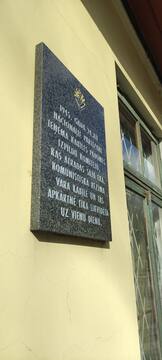
Kabilės užėmimas 1945–1946 m. sandūroje
Viena ryškiausių pokario ginkluoto pasipriešinimo Kuržemėje apraiškų buvo Kabilės užėmimas per 1945 m. Kalėdas ir po to įvykęs mūšis prie Āpuzniekų namų 1946 m. 2019 m. sausio 1 d.
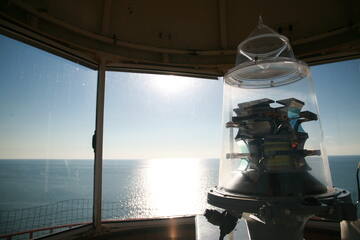
Kyšulys ir laivas "Saratov"
Galima daryti prielaidą, kad Liepoja trumpą laiką buvo Latvijos sostinė, nes Laisvės kovų metu Laikinoji vyriausybė stovėjo laive Saratov būtent šiame mieste. Laikinąją vyriausybę po išvadavimo Saratovas nugabeno į Rygą, tačiau daug kas nežino, kad tokio mums svarbaus laivo istorija baigėsi jūroje ties Akmenrage.
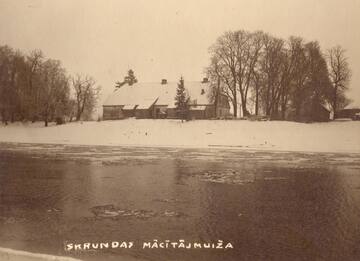
Mūšis prie Skrundos mokyklos 1919 metų sausio 22 d
Vado leitenanto Jānio Īselio prisiminimai apie kautynes Skrundos mokykloje 1919 m. sausio 22 d.
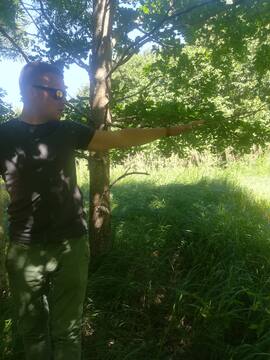
Grieze karo belaisvių stovykla 1945 m
2020 metais I.Kupce pasakoja apie savo šeimos nario uošvio patirtį Griezės sovietų filtracijos lageryje 1945 metais, Kuržemėje pasidavus vokiečių kariuomenei.
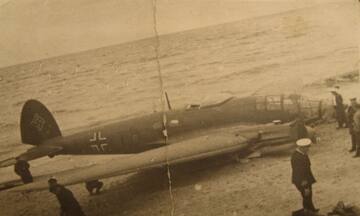
Karosta – vokiško He-111 nusileidimo vieta Liepojos paplūdimyje 1939 m
1939 m. rugsėjo 11 d. vokiečių bombonešis Henkel He-111 puolė Lenkijos miestus, kai naktį nukrypo nuo kurso ir avariniu būdu nusileido Liepojos paplūdimyje. Apie šį įvykį pasakojama Liepojos gyventojo, Kuržemės skyriaus ryšių kuopos pareigūno Vilio Zobenso atsiminimuose. Nusileidimo vieta gamtoje nepažymėta. Apytikslės koordinatės yra N 56.59368° E 21.01598° – paplūdimyje prie šiaurinių fortų.
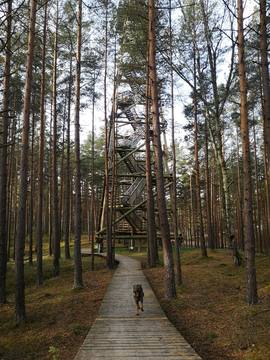
Kamuoliukų kalnas
Bumbų kalnas – aukšta kalva Bolderajos kopose, Kleistų miške, Rygoje. Latvijos laisvės kovų memorialas. 1919 m. lapkričio mėn. Bermontiados metu čia buvo Krišjānio Berkio vadovaujamos Latgalos divizijos vadavietė. 6. Rygos pėstininkų pulkas, puldamas nuo Bumbu kalno, užėmė Sidabrinį kalną. 1939 m. buvo įrengta atminimo lenta, kuri 1969 m. buvo sunaikinta. Memorialas atstatytas 1989 m.
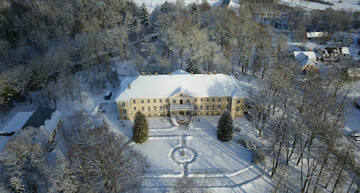
Generolo Ridigerio fon der Goltzo vizitas Rudbaržiuose 1919 m. vasario mėn
1919 m. vasarį po sėkmingos antivokiškos kampanijos Suomijoje vokiečių generolas Ridigeris von der Goltzas buvo paskirtas vokiečių ginkluotųjų formacijų Kuršėje ir Šiaurės Lietuvoje, įskaitant Landverį, kuriam priklausė 1-asis latvių batalionas, vadu. 1919 m. vasario mėn. lankydamasis fronte jis taip pat atvyko į Rudbāržus. Generolo vizitą savo prisiminimuose aprašė bataliono specialiųjų užduočių karininkas leitenantas Jānis Ķīselis.
Užmiršta Livonijos pakrantė
Paskutinių Livonijos kaimų teritoriją Latvijos šiaurės vakarinėje pakrantėje nuo 1950 metų Tarybos sistemingai naikino ir paskelbė uždrausta zona. 12 žvejų kaimų išgyveno tik mažytė saujelė šių žmonių, kurie šiuo metu išgyvena savotišką kultūrinį renesansą.
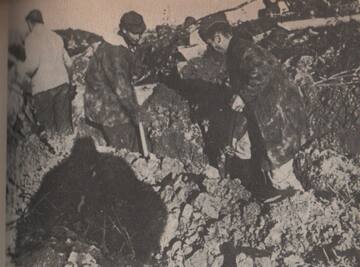
"Kasti geriau nei užkasti!"
Kariuomenės grupės „Kurlandas“ įsakymas yra: „Statyk ir statyk! Tai užduotis kiekvienam užnugario tarnybų fronto kariui. Kurį geriausiai pažymi žodis: „Kasti geriau nei užkasti!
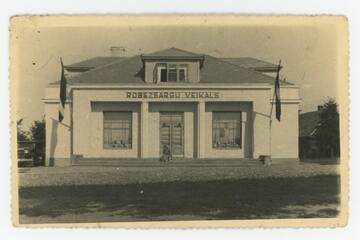
Pasienio sargyba Latgaloje pulkininko Liudviko Bolšteino (1935–1940) laikais
1935–1940 1918 m., vadovaujant iškiliam lyderiui ir patriotiškai nusiteikusiam pulkininkui Liudvikui Bolšteinui, pasieniečiai išgyveno klestėjimą – buvo pastatyti nauji pasieniečių pastatai, kuriuose gyveno ir jų šeimos.
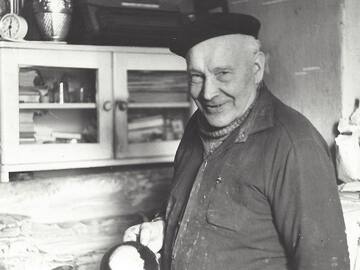
Prisiminimai apie Žanį Lipkę
Po sovietų okupacijos sekė vokiečių okupacija. Naciai įvykdė nusikaltimus prieš Latvijos žmones. Viena iš tokių etninių grupių buvo žydai. Iš pradžių buvo kuriami getai, bet vėliau prasidėjo žydų naikinimas. Daugelis latvių išgelbėjo žydus nuo sunaikinimo. Vienas iš jų – Žanis Lipke.
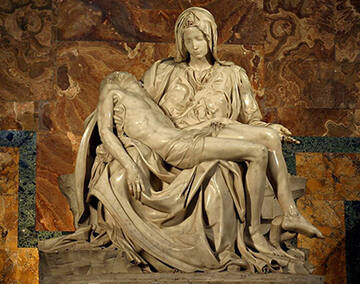
Pieta arba „Mamos“ memorialinis ansamblis Nīkrace
Pieta, arba Mamytė, yra gerai žinomas Europos kultūros ir meno motyvas, naudotas ir sovietmečiu.
Šliterės valstybinis rezervatas pasienio režimo zonoje
Buvusių Šliterės valstybinio rezervato darbuotojų prisiminimai apie sovietmetį.
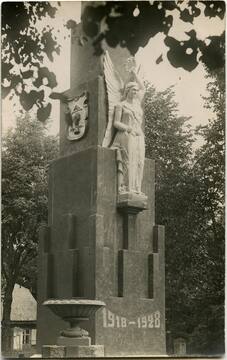
Skandalingas Laisvės paminklas
XX a. 3 deš. pabaigoje Plungėje pastatytas Laisvės paminklas sukėlė skandalą religingoje bendruomenėje dėl apnuogintos moters figūros, kuri turėjo simbolizuoti Laisvę, bet tapo nesibaigiančių ginčų objektu – tiek etikos, tiek kokybės klausimais.
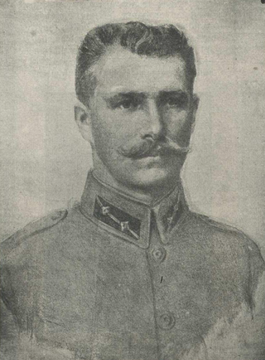
Oskarui Kalpakui atminti
Oskaro Kalpako atminimas saugomas daug kur – tai liudija jo gimtasis Liepsalu namas, paminklas Visagalos kapinėse, atminimo renginiai ir gražūs Kovo 6-osios koncertai, Meirānu Kalpako pagrindinė mokykla, gatvės Lubanoje, Madonoje ir kituose miestuose ir toliau. Bet šiame straipsnyje – apie Oskaro Kalpako atminimo išsaugojimą gimtinėje XX amžiaus 2–3 dešimtmetyje. metų.
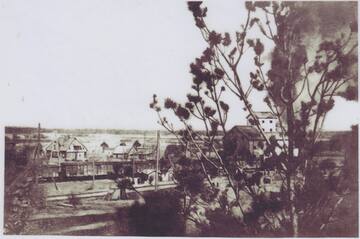
Prie Skrundos stoties 1949 metais slapta nufotografuotas tremties ešelonas
1949 m. kovo 25 d. Skrundos mokinys Elmaras Heniņš matė, kaip buvo išvežti jo klasės draugai. Jis pasiėmė fotoaparatą ir užlipo ant netoliese esančios kalvos pušyno, kad užfiksuotų, kas vyksta, vėliau nuotraukas paslėpė.
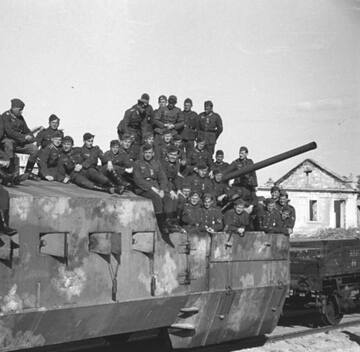
Paskutinis 3-iojo vokiečių kariuomenės šarvuočio traukinio mūšis prie Vaiňodės stoties
1944 metų spalį vokiečių kariuomenė traukiasi. Į Vaiņodės stotį atvyksta 3-ias šarvuotas traukinys.
Žlugus vokiečių frontui, rytiniame Vaiņodės pakraštyje buvo tik nedideli vokiečių 61-osios pėstininkų divizijos daliniai, palaikomi šarvuoto traukinio. Pasipriešinimas buvo greitai įveiktas ir iki spalio 9 d. vakaro visa Vaiņodė buvo visiškai kontroliuojama Raudonosios armijos.
Vokiečių kariuomenės šarvuoto traukinio Nr.3 vado pranešime atsispindi intensyvūs tų dienų įvykiai ir šarvuočio Nr.3 praradimas.

Oro pagalba Edgaro Auninio prisiminimai apie Antrojo pasaulinio karo pabaigą Ezerės ežere
Ištrauka iš atsiminimų apie Kuržemės pasidavimą 1945 m. gegužę, iš orlaivių stribų kapralo Edgaro Aunino atsiminimų
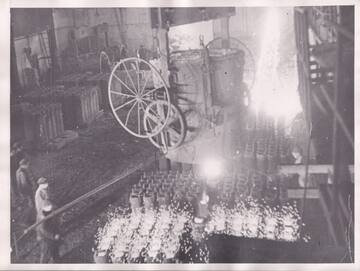
Pasakos apie nuskendusią techniką
Latvijoje išliko daugybė istorijų apie pelkėse ir ežeruose skęstančią techniką. Nedaug iš jų yra tiesa.
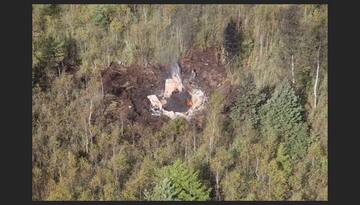
Zvardineikos vaikystė bombų sprogimų šešėlyje – numuštas lėktuvas
Sąvartynas buvo naudojamas iki 1992 m., o net 1992 m. kovo mėnesį sąvartyno teritorijoje dėl nežinomų priežasčių sudužo iš Lielvārdės pakilęs lėktuvas.
Leidžiu laiką prie jūros.
Beveik visą gyvenimą savo šeimos namuose Vaidės kaime „Purvziedi“ praleidęs Edgaras Hausmanis pasakoja apie gyvenimą Baltijos jūros pakrantėje skirtingais laikais. Edgaras turi ką prisiminti, o mes turime ko išmokti.
Ilūkstės partizanų pulko žygis
Jānis Baltmanis dalijasi prisiminimais apie dalyvavimą tautinio pasipriešinimo judėjime nuo 1944 metų vasaros iki 1946 metų vasaros.
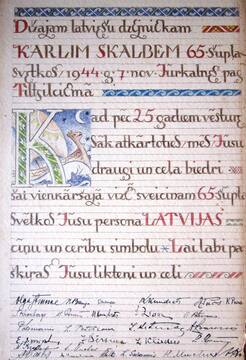
Paskutinė Kārlio Skalbės gimtadienio šventė Kuržemės pajūryje
1944 m. lapkričio 7 d. šviesią nuotaiką į Latvijos pabėgėlių gyvenvietę Kuržemės pajūryje atnešė poeto Kārlio Skalbės 65-ojo gimtadienio minėjimai Jūrkalnės „Laukgaliuose“. Vos po keturių dienų Kārlis Skalbe valtimi išplaukė į Švediją kaip pabėgėlis. Tai buvo diena, kai Kārlis Skalbė paskutinį kartą šventė savo gimtadienį.
Paskutinis mūšis Užpelkių miške
1949 m. rugpjūčio 13 d. Radviliškio apskrityje, Užpelkių miške, įvyko lemtingas mūšis, kurio metu žuvo LLKS tarybos prezidiumo narys, Vasario 16-osios deklaracijos signataras Bronius Liesys-Naktis kartu su kitais Prisikėlimo apygardos partizanais.
Pasienio apsaugos skalbykla
Kolkiškė Mirdza Stankevica dalijasi prisiminimais apie laikus, kai buvo skalbėja.
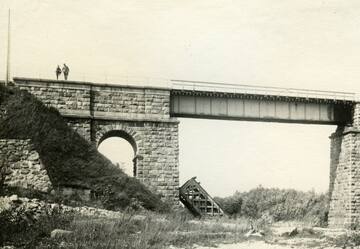
Cėsių mūšis Amatos upės pakrantėje
Prie tilto per Amatą vokiečių Landesveras puola deryboms atvykusį Estijos šarvuotąjį traukinį. Estai atidaro priešugnį, vokiečiai atmušami, o šarvuotas traukinys grįžta į Cėsis.
Negos upės tilto išgelbėjimas nuo susprogdinimo
Tuo metu, kai 1944 m. vokiečiai traukėsi, buvo susprogdinta daug svarbių objektų ir to išvengti buvo labai sunku, tačiau pasakojama ir apie stebuklingus nutikimus, kai vietos gyventojų drąsa ir kario tolerancija leido išsaugoti vietos gyventojams svarbias vietas, lašiša išliko gyva. Viena iš istorijų yra ši apie diskusiją tarp namų šeimininkės ir vokiečių kareivio, kuris išgelbėjo nuo susprogdinimo visą tiltą.
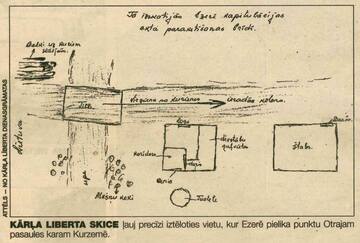
Kārlio Liberto prisiminimai apie vokiečių kariuomenės kapituliacijos dieną Ezerėje
Istoriškai reikšmingame pastate įkurta Ežerės kultūros istorijos ir kraštotyros medžiagos saugykla „Muitinės namai“. 1945 metų gegužės 8 dieną čia buvo pasirašytas Kurlando fronte apsuptos nacistinės Vokietijos kariuomenės grupės „Kurland“ kapituliacijos aktas.
Prisiminimais apie tos dienos įvykius dalijasi buvęs Raudonosios armijos karys Kārlis Liberts.
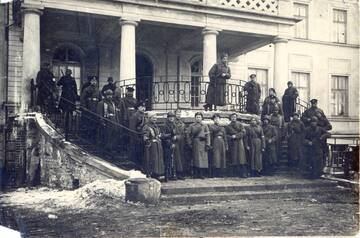
Pulkininko Oskaro Kalpako didvyriškumas Skrundos mūšyje
Pulkininkas Oskars Kalpaks savo karių pagarbą pelnė asmeniniu pavyzdžiu ir padrąsinimu.
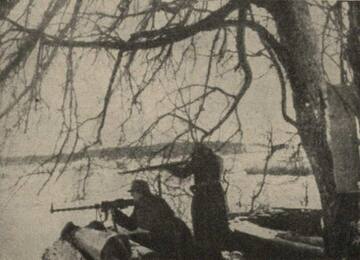
Kapitono Aleksandro Levingo prisiminimai apie žvalgybą virš Ventos prie Lenos
1919 m. vasarį abipus Ventos upės aktyviai veikė žvalgybinė veikla. Kapitonas Aleksandras Loevingas, kavalerijos divizijos viršininkas, buvo vienas iš žvalgybinių reidų vadų.
Rainių žudynės: netikėtai atrastos aukos
1941 m. birželio 24-25 d. Rainių miškelyje, netoli Telšių, NKVD ir raudonarmiečiai ypatingai žiauriai nukankino 73 politinius kalinius iš Telšių kalėjimo - tai tapo vienu kraupiausiųjų sovietų nusikaltimų Lietuvoje.
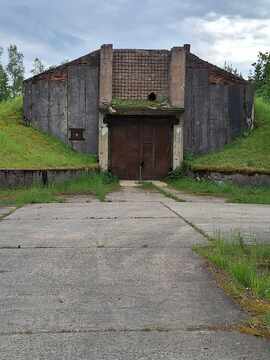
Apie slaptą branduolinės bazės angarą
Požeminėje termobranduolinių raketų bazėje Plokštinės miškuose buvo įrengtas ypatingai slaptas angaras, apie kurį vietos gyventojai iki šiol žino labai mažai ir kurio paskirtis apipinta gandais apie branduolinių raketų galvučių saugojimą.
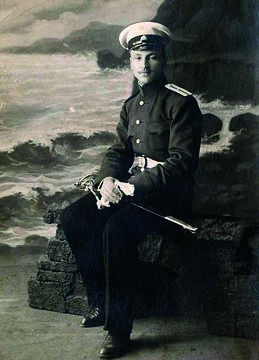
Apie tautos patriotą pirmąjį leitenantą Vilį Gelbį
Pulkininko leitenanto Vilio Gelbės (1890-1919) likimas atspindi sunkią mūsų valstybės ir kariuomenės formavimosi situaciją bei šių įvykių vertinimą.
1918 m. lapkričio 18 d. paskelbus Latvijos valstybę, prasidėjo ir jos Nepriklausomybės karas bei ginkluotųjų pajėgų kūrimo darbai. Latvių karių savanorių priešakyje buvo Kuržemėje gimęs karinio jūrų laivyno leitenantas Vilis Gelbė.
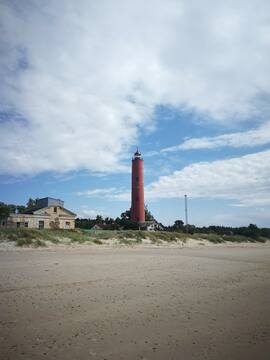
Akmenrago karinis kompleksas
Sovietmečiu Akmenrage buvo karinis kompleksas.

Paskutinis pulkininko Kalpako mūšis prie Airytės
Pulkininkas Kalpaks buvo gerbiamas veikėjas kariniuose sluoksniuose ir tikras patriotas. Būtent patriotizmo dvasia ir nelemtas atsitiktinumas lėmė lemtingą jo ir vokiečių batalionų susidūrimą, kuris, deja, baigėsi pulkininko Kalpako žūtimi.
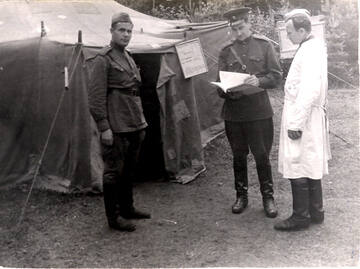
K. Meškausko prisiminimai apie Plungės rajono raketų bazes
Plungės rajone buvusios raketinės bazės, slepia įspūdingą šaltojo karo istoriją – nuo slapta naktimis gabenamo raketinio kuro iki požeminių šachtų statybos su dirbtiniu slėgiu. Gydytojo Kajetono Meškausko prisiminimai atskleidžia mažai žinomas detales apie sovietų kariuomenės veiklą ir statybininkų gyvenimą. Jo pasakojimas – ne tik apie bazę, bet ir apie žmogų, kuris atsidūrė istorijos viduryje.
Vyskupo Heinricho III pasmaugimas
1381 m. pilyje savo galą sutiko 80-metis Saare-Lääne vyskupas Heinrichas III.
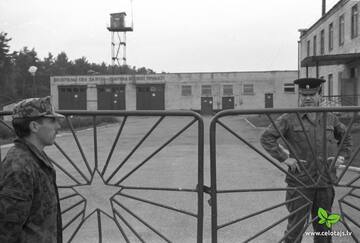
Apie Kolkos pasieniečius
Kolkos gyventoja Baiba Šuvcāne pasakoja apie laikus Kolkoje, kai ten buvo pasieniečiai.
Rygos getas ir holokaustas
Sąmoningai parinkti trijų skirtingų žmonių atsiminimų fragmentai, leidžiantys tiksliau pažvelgti į Holokausto nusikaltimą iš skirtingų požiūrių.
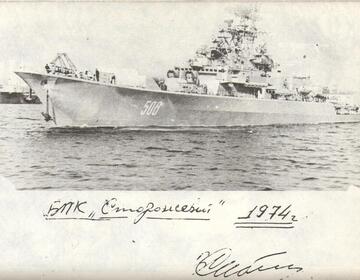
Maištas karo laive "STOROZHEVOYA"
1975 m. lapkričio 8 d., kaip buvo įprasta SSRS, Rygoje vyko dar vienas didelio masto bolševikų revoliucijos metinių minėjimas. Niekas net siaubingiausiuose košmaruose negalėjo pagalvoti, kad 58-osios revoliucijos metinės į Latvijos ir SSRS istoriją įeis kaip kažkas neregėto ir precedento neturinčio – maišto laive „Storoževoj“, didžiuliame priešpovandeniniame laive. 15 metų SSRS neigė, kad laive įvyko maištas.
Sulev Truuväärt prisiminimai
Dejeve tarnavęs salos gyventojas majoras Sulev Truuväärt prisiminė, kad jo metu dalinyje žuvo vienas karys.
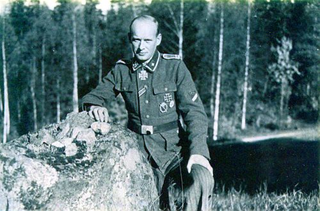
Alfredas Riekstinys – Riterio kryžiaus kavalierius
1945 metų pradžioje dar vyko įnirtingi mūšiai Kuršo tvirtovėje, kur vokiečių kariuomenės gretose kovėsi latviai. Vienas iš jų buvo Alfredas Riekstinys 19-oje divizijoje. Už drąsą Riekstiņa yra apdovanota Riterio kryžiumi ir įteikiama Remtės pilyje. Prieš pat kapituliaciją jis tampa leitenantu.
Žmogus, gelbėjęs persekiojamuosius
Bronius Gotautas, žmonių vadinamas Broliuku, Antrojo pasaulinio karo metais ir pokaryje rizikavo gyvybe gelbėdamas persekiojamus žmones - tiek žydus, tiek lietuvius nacionalistus, tiek rusų kareivius.
Salantų žydų moterų žudynės Šateikių miške
1941 m. vasarą Šateikių miške įvykdytos žydų moterų ir vaikų žudynės, kurias organizavo vietos policija ir baltaraiščiai. Į žudynių vietą aukos buvo vežamos iš Salantų, o prieš sušaudymą joms liepta nusirengti ir šokti į iškastą duobę. Skirtingų šaltinių duomenimis per šias egzekucijas nužudyta nuo 95 iki 230 žmonių, daugiausiai moterų ir merginų.

Šnipo pėdsakais
Žmonių prisiminimai kartais būna gana trumpi. Dabar, kai visi gali eiti ir eiti kur nori, daugelis verkia dėl pamestos pigios dešros, bet jau pamiršo, kad iškart už Mersrago, priešais kelią, dažnai nusileisdavo dryžuota bomba ir ginkluoti rusų kariai, vadinami pasieniečiais, leisdavo praeiti tik su išrašytais ir antspauduotais leidimais. Ir leidimą gauti galėjo ne bet kuris Latvijos TSR gyventojas, o tik tie, kurie pirmą kartą buvo gavę vadinamąjį Rojos ar Kolkos kaimo tarybos šaukimą, kurio pagrindu po dešimties dienų savo milicijos padalinyje galėjo (arba negalėjo) gauti vizą atvykti į draudžiamą pasienio zoną. Buvau nusipirkęs namą šioje nelaimingoje Kuržemės pakrantėje, todėl kiekvieną pavasarį aš ir mano šeimos nariai turėdavome melstis ir nusižeminti, kad valdžia atnaujintų mums leidimą atvykti.
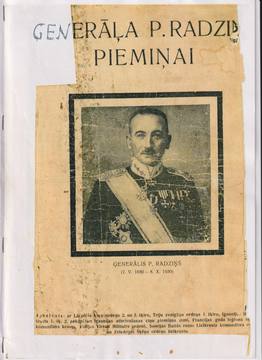
Latvijos kariuomenės generolo, dukart Lāčplėsio karo ordino kavalieriaus Pēterio Radzinio atminimui.
Generolas Pēteris Radziņš gimė Lugažų valsčiuje, Valkos rajone, paprastoje ūkininko šeimoje, kur išmoko dirbti ūkio darbus. Jis buvo labai protingas jaunuolis, baigęs mokyklą apsisprendė kariauti ir taip pradėjo savo kariuomenės kelionę, gelbėdamas Latviją nuo Bermonto kariuomenės. P. Radziņš buvo vienas iškiliausių Latvijos kariuomenės karininkų, apdovanotas daugybe Latvijos ir užsienio ordinais bei atminimo medaliais.
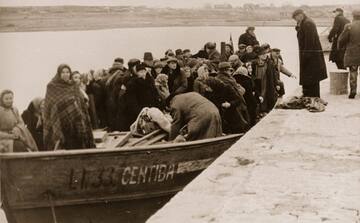
Pirmasis pabėgėlių laivas „Centība“ iš Bambalio
1944 m. spalio 31 d. laivas "Centība" išplaukė iš Kuržemės kranto. Šio laivo išplaukimą pagal kelių bendrakeleivių prisiminimus rekonstravo Latvijos centrinės tarybos sušaukėja Valentīne Lasmane.
Kaip Reola buvo išlaisvinta
1919 m. sausio mėn. Reolos mūšio, laikomo Nepriklausomybės karo lūžiu, aprašymas, kurio metu Estijos kariuomenė sužlugdė Raudonosios armijos bandymą užimti Tartu.
Trispalvė virš Sukilėlių kalnelio
1956 metais, Vengrijos sukilimo įkvėpti, lietuviai iškėlė trispalvę ant Sukilėlių kalnelio - trumpas, bet reikšmingas laisvės ženklas sovietmečiu.
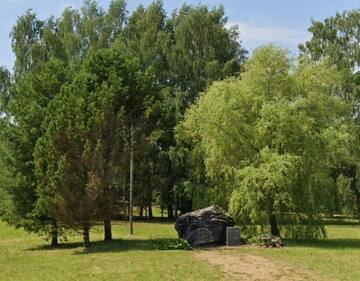
Čia „Panfilovo divizija“ susitiko gegužės 9 d
Raudonosios armijos „Panfilovo divizija“ 1945 m. gegužės 9 d. buvo netoli Pampalių. Divizijos štabas greičiausiai buvo Pampalio pradžios mokykloje.
Apie Raudonosios armijos karių nusikaltimus Tukume.
Sovietų okupacijos metais Tukume buvo pastatyti keli paminklai Raudonajai armijai. Šiandien jie neprarado savo buvusių sovietinių ideologinių tikslų ir toliau kuria mitą apie Raudonąją armiją kaip išvaduotojus. Apie Raudonosios armijos karių nusikaltimus yra išlikę įvairių šaltinių. Vieną šaltinių grupę galima rasti vietiniuose laikraščiuose, kuriuose vaizdingai aprašomas Raudonosios armijos nusikaltimų leistinumas ir mastas.
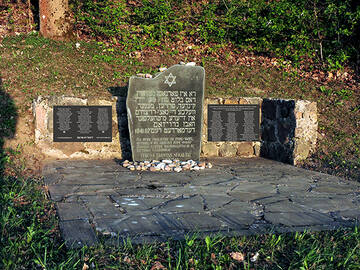
Platelių žydų tragedija
Platelių miestelio Jazminų kalne 1941 m. liepos mėnesį buvo nužudyti 30 vietos žydų, o vieta vėliau tapo atmintina dėl tragiškų čia nutikusių įvykių.
Aidų Pergalės altoriaus istorija
Aidų Nepriklausomybės kovų pergalės altoriaus sunaikinimo ir jo liekanų istorija.
Bandymas pabėgti iš SSRS
Jaunimui ir sovietinių laikų nepažįstantiems užsieniečiams bus sunku patikėti, kad sovietų piliečiui legaliai išvykti iš SSRS buvo praktiškai neįmanoma.
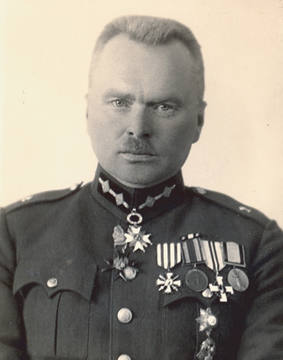
Atminimo akimirka Garnizono kapinėse
Atkūrus Latvijos nepriklausomybę Alūksnės brolių kapinių komiteto vadovas Uldis Veldre prisiėmė atsakomybę už Garnizono kapinių priežiūrą, su Alūksne susijusių LKOK poilsio vietų nustatymą, atminimo ženklų įrengimą Įgulos kapinėse.
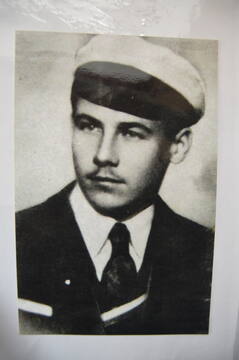
Pēteris Supe - Latvijos nacionalinių partizanų asociacijos įkūrimo iniciatorius
1944–1946 m. Pēteriui Supei pavyko suburti miškuose išsibarsčiusius tautinių partizanų būrius į organizuotą judėjimą, kuris po II pasaulinio karo keletą metų Abrenės apskrityje kovojo prieš Latvijos okupaciją. Pēteris Supe, pravarde „Cinītis“, buvo vienas ryškiausių nacionalinio partizaninio judėjimo Šiaurės Latgaloje organizatorių ir vadų.
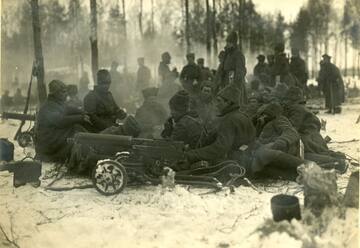
Įrašas dienoraštyje apie momentą, kai kariai sužino apie pasiruošimą kalėdinėms kautynėms.
Latvių lankininkai ir jų karininkai apie mūšio pradžią buvo informuoti paskutinę akimirką. 5-ojo Žiemgalos latvių šaulių pulko puskarininkis Rudolfas Ivanovas savo dienoraštyje aprašė paskutinį vakarą prieš mūšio pradžią. Trumpas, bet ryškus ir autentiškas tekstas, parodantis labai svarbų kariui momentą – jis sužino apie mūšio dieną.

„Karas nesibaigia, kol nebus palaidotas paskutinis karys“ (Priekulės brolių kapinės)
1944 m. spalio 10 d. Kurša iškilo kaip atskiras ir savitas mūšio laukas. Buvo laikoma, kad apie 500 000 vokiečių karių buvo apsupti. Remiantis 1-ojo Baltijos fronto štabo pranešimais, norint visiškai išlaisvinti visą Baltijos pakrantę, prireikė tik „nedidelių pastangų“. Tačiau kovos Kuršoje tęsėsi dar septynis mėnesius ir Kurša tapo Antrojo pasaulinio karo pabaigos simboliu.
Per septynis mūšio mėnesius iki 1945 m. gegužės Vokietijos ginkluotosios pajėgos Kuržemėje neteko 154 108 žuvusių, sužeistų ir dingusių be žinios karių, o Raudonosios armijos nuostoliai buvo apie 400 000 žuvusių, sužeistų arba dingusių be žinios.
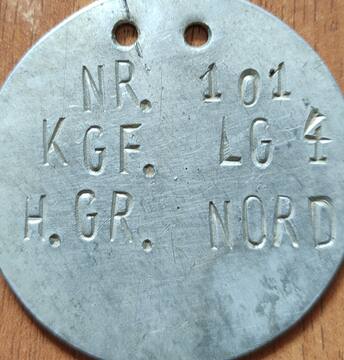
Atradimas Grieze filtravimo stovyklos vietoje
Griezės filtravimo stovyklos vietoje ir prie jos vedančių kelių dažnai randami įvairūs buvusiems kariams priklausę objektai. Kariai, suimti civiliai, karo belaisviai ir kt. jais disponavo dėl įvairių priežasčių – tiek siekdami išvengti atpažinimo, tiek tam, kad jiems nebūtų skiriamas „ypatingas dėmesys“.
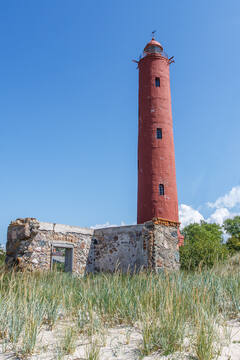
„Latvijos TSR AE bus čia!
Andrio Zaļkalno (g. 1951 m., Vėrgalės kaimo Liaudies deputatų tarybos pirmininkas (1982-1989)) prisiminimai apie laiką, kai Akmenrage beveik buvo pastatyta atominė elektrinė.
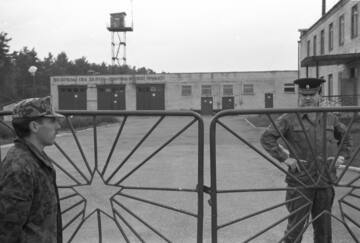
Apie Košradzniekų santykius su sovietų kariais
Imanto Upnerio prisiminimai apie sovietmetį.
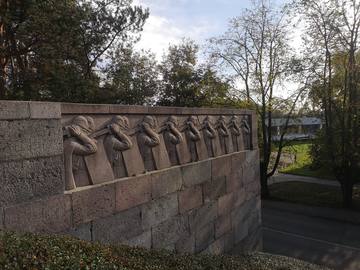
Apie Sidabrinės kalvos atidarymo šventę
Ištrauka iš prisiminimų istorijos iš generolo Jāņo Baložo kalbos Sudrabkalninio paminklo atidengimo dieną. Visas tekstas yra atidarymo renginio atpasakojimas, prezidento Kārlio Ulmanio ir generolo Jāņo Baložo kalbos. Prisiminimai pasirinkti, nes juose vaizdingai matyti Sudrabkalnino apylinkėse kovojančios Latvijos kariuomenės būklė.
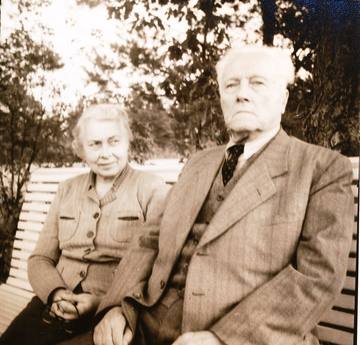
Generolo Jāņo Baložo gyvenimas grįžus iš tremties
Kai 1940 metais rusai bandė iš Latvijos vyriausybės išspausti palankią karinės bazės sutartį, dėl kurios Latvijos kariuomenės galimybės pasipriešinti Raudonajai armijai būtų beveik neįmanomos, generolas J. Balodis bandė gauti kai kurias sutarties pataisas. Bet tai neveikia. Bet generolo niekintojai pasinaudoja šia aplinkybe, kad vėliau J.Balodžio vos nepaverstų išdaviku. Po konflikto su ministru pirmininku ir valstybės ministru K. Ulmaniu 1940 metų balandžio 5 dieną generolas buvo atleistas iš karo ministro posto. Tada J. Balodis nusprendžia dalyvauti Seimo rinkimuose iš Demokratinio bloko, bet nieko neišeina, nes rinkimuose leidžiama dalyvauti tik vienam sąrašui – komunistų kandidatų sąrašui. Latvija tampa 14-ąja sovietine respublika.
Estijos karinis jūrų laivynas padeda Latvijos pajėgoms Nepriklausomybės karo metu
Birželio 23 dieną estai švenčia Pergalės dieną, pažymėdami bendrą Latvijos ir Estijos pergalę Cėsių mūšyje. Ir šioje pergalėje nemažą vaidmenį suvaidino Estijos karinis jūrų laivynas, kuris šiame Landesvero kare, kaip jį vadina estai, savo drąsiais veiksmais ir tikslia patrankų ugnimi Dauguvos žiotyse kėlė grėsmę pagrindiniams vokiečių pajėgų tiekimo maršrutams per Dauguvą visai netoli Rygos.

Suomijos jėgerių vėliavos pašventinimas Liepojos Šventosios Trejybės katedroje
Pirmoji Nepriklausomos Suomijos vėliava buvo pašventinta 1918 metais Liepojoje, Švč.Trejybės bažnyčioje, kur suomių jägeriai prieš išvykdami namo prisiekė būti ištikimi teisėtai Nepriklausomos Suomijos vyriausybei.
„Bet – kas turi gyvenimą prie jūros...“ (fragmentas)
Maža ištrauka iš interviu su Eriku Sēnisu iš Ģipkos. Jis pasakoja savo gyvenimo prisiminimus.
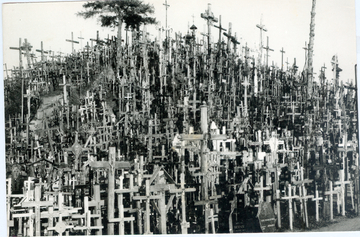
Kryžių kalno griovimas: aktyviausio naikinimo liudijimas
Sovietmečiu Kryžių kalnas sovietinės valdžios buvo ne kartą naikinamas, vienas iš organizuotų griovimų įvyko XX a. antroje pusėje, kai partijos nurodymu buvo sutelkta apie 300 vyrų šiam darbui atlikti, o procesas buvo kruopščiai suplanuotas ir koordinuotas.

Kuržemės ir Žiemgalos pabėgėlių memorialinės vietos ir palaidojimai Cėsiuose
Iki Pirmojo pasaulinio karo Latvijos teritorijoje gyveno 2552 tūkst. žmonių. 1920 metų gyventojų surašymo metu užregistruota 1596 tūkst. žmonių. Tai reiškia, kad per šį laikotarpį Latvijoje gyventojų sumažėjo 956 tūkst. žmonių, arba 37,5 proc.
1915 metų vasarą vokiečių kariuomenė užėmė Kurzemį ir Žiemgalį. Daugiau nei pusė milijono pabėgėlių paliko savo gimtąsias vietas nesibaigiančiu srautu. Pirmieji pabėgėliai į Cesius atvyko jau 1915 metų balandį.
Sklindžiai su "Neptūnu": MGB nuodai partizanams
1955 metais Žemaitijos partizanai tapo sovietų MGB agento klastingos operacijos aukomis - specialiais preparatais užnuodyti sklindžiai su medumi turėjo pražudyti laisvės kovotojus.
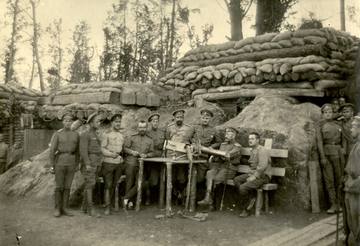
Gynybinių pozicijų formavimas.
Aprašyme apskritai nagrinėjama mūšio lauko įtvirtinimo problema. Jis sukurtas remiantis I pasaulinio karo patirtimi ir situacija, kai būtina organizuoti didelius įtvirtinimų kūrimo darbus.
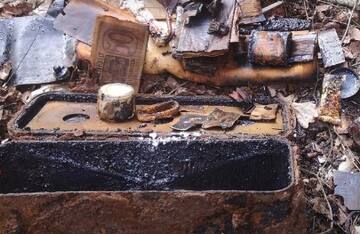
Legionieriaus Andrejaus Apsīčio palikimas Remtės girioje
Kuržemės miškuose karts nuo karto aptinkama Antrojo pasaulinio karo liudijimų, nes karo reliktų ir istorinių senienų entuziastai su metalo ieškikliais Kuržemės miškuose ir laukuose lankosi itin dažnai. 2021 metų pradžioje Saldus savivaldybės Remtės pusėje miške užkastoje šovinių dėžėje buvo rasti įvairūs dokumentai, įrodantys priklausymą Latvijos legiono 19-ajai divizijai, taip pat kario asmeniniai daiktai. Jie gulėjo žemėje 76 metus.
Rannu mūšis ir rinkti tekstai iš apylinkių – priežastys didžiuotis Rannu
Apie Rannu mūšį ir jo ryšį su kūriniu „Vardai ant marmurinės lentelės“.

Sovietų Sąjungos didvyrio žygdarbis - leitenantas Jakobas Kunderis iš 8-ojo Estijos korpuso
Didvyriški žuvusio Raudonosios armijos Estijos 8-ojo šaulių korpuso karininko Jakobo Kunderos veiksmai užtikrino sėkmingą bataliono puolimą, tačiau jis pats žuvo, o Jakobui Kunderai žuvimo vietoje yra skirtas paminklas, Tuškų brolių kapinėse pastatytas paminklas.
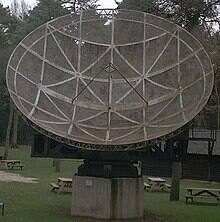
Vokiečių armijos radiolokacinis postas Ulmalyje
Vokietijos ginkluotosios pajėgos keliose vietose dislokavo radiolokacines stotis, o tai leido daug anksčiau nustatyti priešo aviacijos veiklą Kuržemės srityje.
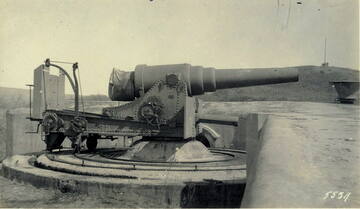
Apie Liepojos tvirtovės pabūklus
Šiaurinėje tvirtovės dalyje buvo viena iš keturių pakrančių gynybos baterijų – baterija Nr.1, tačiau tvirtovės likvidavimo metu jos ginkluotė nebuvo pilnai įrengta.
Moterų darbas sovietų tremtyje
Lietuvės tremtinės, įpratusios prie tradicinių moters vaidmenų tarpukario Lietuvoje, tremtyje susidūrė su sunkiu fiziniu darbu ir nauja realybe, kur nebeliko skirtumo tarp "vyriškų" ir "moteriškų" darbų.
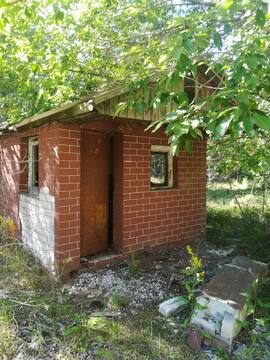
Krasnoflotskajos laiškų netvarka
Sovietmečiu buvo įdomių incidentų su „Krasnoflotskaya“ pavadinimu ir geografine padėtimi.
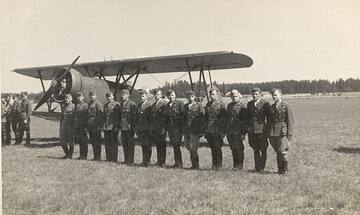
Reidas Vaiņodės aerodrome 1941 m
Istorija apie vokiečių aviacijos antskrydį Vaiņodės aerodrome 1941 m. birželio mėn
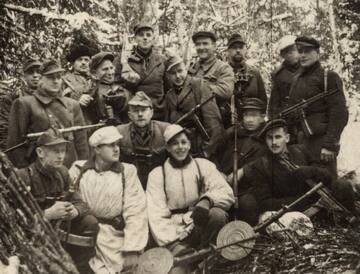
Peter Cheevers grupės veikla ir sunaikinimo istorija
P. Čeveris subūrė aplink save buvusius legiono karininkus, taip pat į grupę sutiko ir vietinius Kuržemės gyventojus. Visi jie nusprendė likti ištikimi laisvos ir nepriklausomos Latvijos valstybės idėjai, o ne paklusti svetimai okupacinei valdžiai. „Chever“ grupė dislokuota Talsų rajono Vandzenės – Upesgryvos – Oktės valsčių teritorijoje, stengdamasi išvengti frontinių susirėmimų su čekų kariais ar naikintojų batalionų kovotojais.
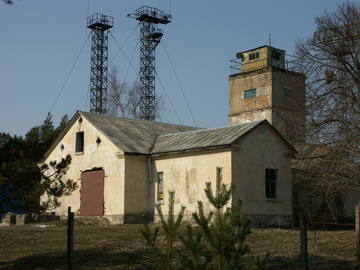
Kolkos rago pasieniečių apžvalgos bokštas
Sovietmečiu iš šio bokšto pasieniečiai stebėjo ir kontroliavo Irbės sąsiaurio vandenis, o tais laikais buvo kalbama, kad be pasieniečių žinios per šį sąsiaurį negali plaukti net antis.
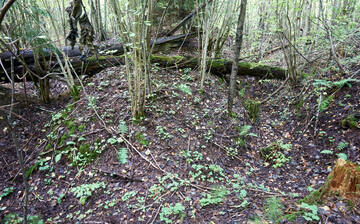
Dėl vietovardžių suteikimo karo metu
Kariuomenei užėmus teritoriją, ne visada pavykdavo sužinoti konkrečių namų, kaimų ar kaimų pavadinimus. Vietiniai gyventojai buvo evakuoti ir nebuvo kam paklausti, todėl vokiečiai linkę duoti vietoms savo pavadinimus. Išliko pasakojimas apie Viliškių namą. Savo atsiminimuose pionierių kuopos vadas pulkininkas leitenantas Kochas, baigęs atsargos karininkų kursus, rašo, kad vienas iš artilerijos dalinių stovėjo prie namo.
Avinurmės mūšis
Apie Lohusu mūšį Estijos nepriklausomybės karo metu ir jame dalyvavusius vyrus bei ginkluotę.
Aviatoriaus Utočkino skrydžiai Tartu
Pirmieji skrydžiai Estijos padangėje – lakūnas Utotškinas virš Raadi 1912 m.
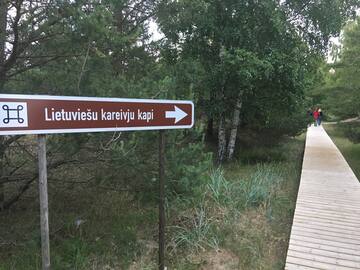
Užjaučiantys Lietuvos pakrančių apsaugos vyrai
Prieš daugiau nei 70 metų Lietuvos pakrančių sargybiniams buvo įvykdyta mirties bausmė už tai, kad jie padėjo savo kaimynams, latviams laivų pabėgėliams, pasiekti Švediją. Apie tai sužinojusi okupacinė vokiečių valdžia žiauriai
Aviacijos variklių testavimo laboratorija
Sovietmečiu į šiaurę nuo Spilvės gatvės buvo keistas objektas, jei atmintis neapgauna – su dviem žemais stačiakampiais iš raudonų plytų „megakaminais“, iš kurių gana dažnai girdėjosi reaktyvinis garsas, panašus į lėktuvų variklių ūžimą.

19-ojo artilerijos pulko vado kapitono Jāņo Ozolo sugebėjimai 3-iajame Kuržemės mūšyje
Kapitonas Jānis Ozols buvo latvių karininkas, Antrojo pasaulinio karo dalyvis, Trijų Žvaigždžių ordino kavalierius, kurio artilerijos skyrius neleido prasiveržti į frontą per Trečiąjį Kurlandos mūšį.
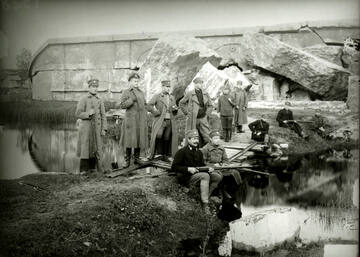
Redano mūšis 1919 m. lapkritį
Donāts Pudulis buvo Liepojos karo uosto komendantūras seržantas, gavęs Bulgės mūšio ordiną už narsą ir narsumą 1919 m. lapkričio 14 d., kai priešui užpuolus Redano fortą, perėmė komendantūros kuopos vadovavimą iš mirtinai sužeisto Radžinio dvarininko leitenanto ir komtūro leitenanto Robertas drofveta. priešas iš forto, paėmęs 8 belaisvius ir 2 veikiančius kulkosvaidžius. Įdomus jo gyvenimas iki Liepojos mūšio. 1911 m., būdamas 16 metų, savanoriu įstojo į Sibiro šaulių pulką. 1914 m. dalyvavo mūšiuose su vokiečių kariuomene Varšuvoje, Lodzėje ir kitur Lenkijos fronte, vėliau – mūšiuose su Austrijos kariuomene. 1915 m. jis išplaukė į Prancūziją per Vladivostoką kaip Rusijos ekspedicinio korpuso dalis ir 4 mėnesius kovojo Verdūne. 1917 m. pradžioje įstojo į latvių šaulių pulkus, o 1919 m. balandžio 7 d. – į Latvijos ginkluotąsias pajėgas Liepojoje.
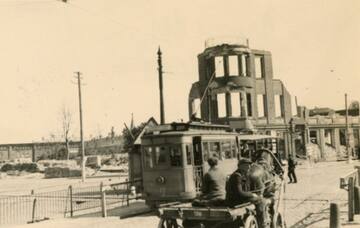
Liepoja – įvairių istorinių įvykių kryžkelėje
Liepojos gyventojai vieni pirmųjų Latvijoje patyrė Antrojo pasaulinio karo pradžią ir vieni paskutiniųjų, kuriems karas baigėsi tiek tiesiogine, tiek simboliška. Antrasis pasaulinis karas ir sovietinė Liepojos okupacija baigėsi tik 1994 m., kai miestą paliko paskutinė SSRS įpėdinės Rusijos kariuomenė.
Nelaimingas įvykis Oriküla valdymo centre
Pasak raketų pajėgų majoro Sulevo Truuväärto, priešlėktuvinė raketa buvo netyčia paleista iš Oriküla divizijos 1967 m.
Latvija ir Estija stato modernius povandeninius laivus
Latvija ir Estija karinėms pajėgoms sustiprinti renkasi naujus ir modernius ginklus – Prancūzijoje ir Didžiojoje Britanijoje pastatytus povandeninius laivus. Du Latvijos karinio jūrų laivyno povandeniniai laivai vėliau Antrojo pasaulinio karo jūrų mūšiuose nedalyvavo, tačiau vienas iš dviejų Estijos povandeninių laivų buvo prarastas, o gyvas Lembit dabar eksponuojamas muziejaus ekspozicijoje atnaujintuose hidroplanų angaruose Taline.
Kogulos aerodromas Saremos saloje
Kogulos oro pajėgų bazė buvo įkurta 1940 m. rugpjūčio mėn.
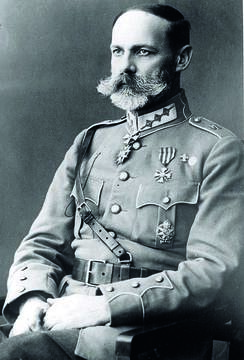
Apie generolą Karlį Goppersą
Generolas K. Goppersas (1876-1941) buvo puikus karys ir puikus žmogus. Pasižymėjo kaip sėkmingas vadas, vadovavęs batalionams ir pulkams, didvyriškai vadovavęs savo šauliams kovose už Latvijos laisvę Pirmojo pasaulinio karo metais (1914–1919). Dalyvavo mūšiuose Tīrelpurvoje, Ložmetējkalnyje, Rygos gynyboje.
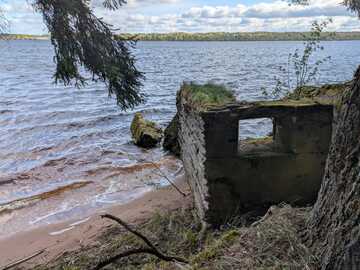
Tomo parapija sunaikinta per Pirmąjį pasaulinį karą
Vienos labiausiai Pirmojo pasaulinio karo metu sunaikintų Latvijos parapijų – Tomės parapijos – istorija

Svarbi Stendės stoties vieta Karaliaus geležinkelių tinkle
Pagrindinė mūšio lauko geležinkelių užduotis Irbes sąsiaurio rajone buvo aprūpinti vokiečių kariuomenės pakrančių gynybos pozicijas pabūklais ir amunicija.
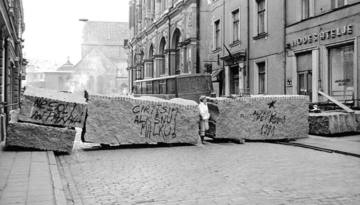
Nuo Rezeknės iki 1991-ųjų barikadų
Pasakotojai aprašo Barikadų nuotaikas ir asmeninius išgyvenimus. Prisiminimai puikiai iliustruoja, kaip informacija galėjo pasiekti Latvijos gyventojus visoje jos teritorijoje.
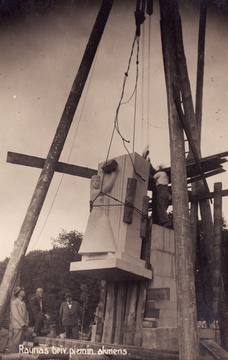
Raunos laisvės paminklas arba paminklas Pirmajame pasauliniame kare ir Laisvės kovose žuvusiems Raunos parapijos nariams atminti
Raunos Laisvės paminklo idėjos ištakos siekia 1929 metų rugpjūčio 21 dieną, kai Cėsių meras ir Cėsių rajono vadovas į susitikimą pakvietė iškiliausius Raunos parapijos visuomenės veikėjus, pakvietę pagerbti laisvės pasiekimą ir pastatyti paminklą Raunoje.
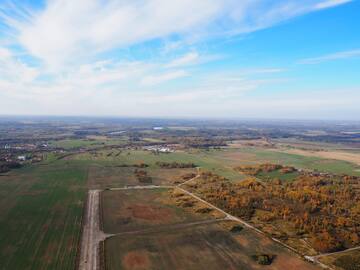
Jekabpilio oro uostas
Jēkabpilio aerodromas – vienas iš karinių aerodromų Latvijos teritorijoje, kuris buvo sukurtas Nepriklausomos Latvijos laikotarpiu apie 1935 m. Po antrosios Latvijos Respublikos okupacijos 1945 m. aerodromas buvo pritaikytas SSRS karinių oro pajėgų reikmėms.
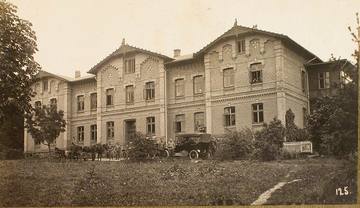
Bērzaine gimnazija – Pirmojo pasaulinio karo liudininkė
1915 m. pavasarį ir vasarą vokiečių kariuomenė užėmė Kuršą ir Žiemgalą. Dauguvos pakrantėse buvo išsidėstę kariaujančių šalių kariuomenė. Vidžemė tapo fronto teritorija, o Cėsis – fronto miestu, aplink kurį įsikūrė carinės Rusijos armijos šiaurinio fronto 12-osios armijos štabas, kuris 1915 metų vasarą ir rudenį persikėlė į Bėrzainą prie Cėsių (Birkenruh bei Wenden), dabartinės Cėsių mokyklos pastate ir teritorijoje. Bērzaine Elementary School.
Snaiperių medžioklė Anneniekų kalvose
Snaiperių medžioklė apkasuose. Pasakotojas aprašo veiksmus, kuriais siekiama sugauti ir sunaikinti priešo snaiperius.
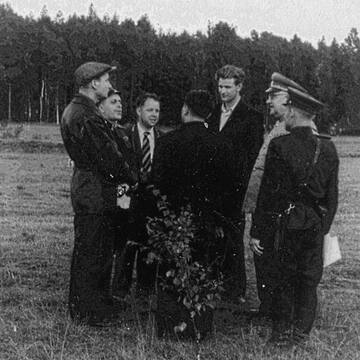
SSRS dvigubas agentas – Edvīns Ozoliņš pravarde „Pilotas“
Šaltojo karo žvalgybos ir kontržvalgybos mūšiuose tarp Vakarų šalių ir SSRS dalyvavo abiejų pusių agentai ir dvigubi agentai. Nuo praėjusio amžiaus 2 dešimtmečio sovietų saugumo tarnybos sukūrė visiškai naują režimo apsaugos priemonę – dezinformaciją. Iki tol Vakaruose visiškai nežinomas terminas.
Legenda apie užmūrytą riterį
Pasak legendos, 1785 m. vienuolyno pastato planą parengęs rusų inžinierius pilies kiemo rytiniame kampe rado užmūrytą rūsį.
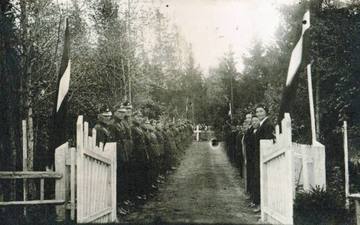
Suomijos savanorių pulko „Šiaurės berniukai“ mūšis Bejoje
1919 metų vasario 23 dieną suomių savanorių pulko „Šiaurės berniukai“ žvalgybos dalinys, tikėdamasis gauti papildomų ginklų ir amunicijos, atvyko į Beja School upės daubą, kur įvyko susirėmimas su bolševikais (Babeckos mūšis). Šiame mūšyje krito 10 suomių pulko karių.
Tartu pateko į JAV branduolinių taikinių šaltojo karo metu sąrašą
Raadi karinis aerodromas Tartu mieste šaltojo karo metais buvo JAV branduolinės atakos taikinys.
Žymaus Muhu kalvio prisiminimai
Andrus Müüripeal (1877-1945) arba Puka Andrus iš Lepiku kaimo, Puka, prieš karą buvo garsus Muhu kalvis.
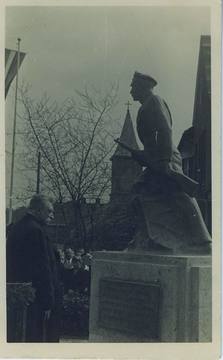
Neįprasta paminklo Cėsių pulko mokyklinei kuopai istorija
1919 m. Cėsių mūšiuose dalyvavo Cėsių pulko savanorių mokinių kuopa, kuri birželio 5 d. buvusios Cėsių vokiečių progimnazijos patalpose Dārza gatvėje (dabar Bērzaines g. 4) susibūrė kaip kovinis būrys iš 108 Valmieros ir Cėsių mokyklų jaunuolių. Jau naktį iš birželio 5 d. į 6 d., maždaug valandą po vidurnakčio, nuskambėjo aliarmas ir įmonei buvo liepta persikelti į vietą. Kuopa žengė į Mācītājmuiža – Meijermuiža liniją, kuri buvo laikoma svarbiausia mūšio zona.

Memorialas Kārlio Ulmanio nužudymui
1920 m. balandžio 15 d. miškingoje vietovėje greitkelyje Lubana - Dzelzava buvo pasikėsinta nužudyti Kārlį Ulmanį, kuris tuo metu ėjo Latvijos ministro pirmininko pareigas, jam vairuojant. Šioje vietoje tarp Dzelzavos ir Indrėnų parapijų ribos 1939 m. rugpjūčio 11 d. buvo įrengta atminimo lenta.
Hansas-Gotthardas Pestke
Riterio kryžiaus kavalierius kovose dėl Hiiumaa užėmimo
Sedos kautynės: bėgimo ir žūties istorija
1944 m. kautynėse prie Sedos buvo patirta ne tik didvyriškų momentų, bet ir paniško bėgimo epizodų, kai kariai, matydami artėjančią pralaimėjimo grėsmę, bandė gelbėti savo gyvybes.
Mokytojos Rimtautės kelias į Sibirą
Praėjus vos dviem mėnesiams po vestuvių, mokytoja Rimtautė Jakaitienė kartu su vyru ir jo tėvais buvo ištremta į Sibirą. Be teismo, be kaltinimų - tiesiog už tai, kad buvo šeima.
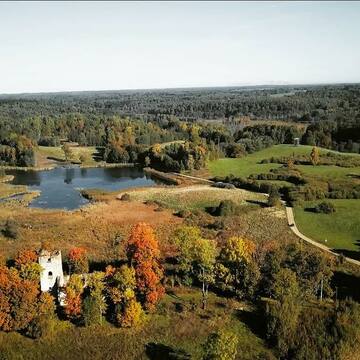
Embute bažnyčios sienos – Antrojo pasaulinio karo liudininkai
Embutės bažnyčia yra viena ryškiausių Antrojo pasaulinio karo Kuržemėje liudininkų. Ant bažnyčios sienų ir varpinės iki šiol matomi artilerijos ir kitų sviedinių pėdsakai. Vokiečių kariuomenė bažnyčią (kaip ir daugelį kitų Kuržemėje ir kitur) naudojo neįveikiamiems gynybiniams tikslams. Dėl to bažnyčia buvo sugriauta ir nebuvo atstatyta nuo sovietų laikų
Ruhnu švyturio legenda
Gamykloje pagamintos katilinės švyturio detalės buvo gabenamos laivu į Ruhnu.
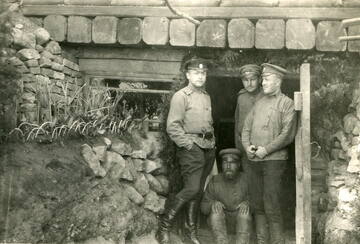
Latvijos lankininkų kasdienybė Mirties saloje
Prisiminimuose vaizdingai aprašoma Mirties salos karių kasdienybė.
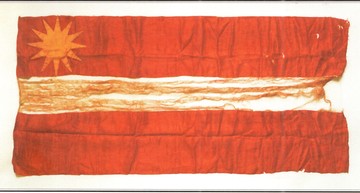
Jānis Lapiņš ir pirmasis Latvijos raudonos, baltos ir raudonos vėliavos projektas
Latvijos nacionalinė vėliava buvo sukurta Pirmojo pasaulinio karo metais. 1915 m., kurdami latvių šaulių batalionų vėliavas, kai kurie menininkai vėliavų dizainui pasiūlė raudoną, baltą ir raudoną spalvas. Švietėjo ir žurnalisto Jānio Lapinio sukurtą raudonai baltai raudoną vėliavą 1916 m. antroje pusėje pagamino jo mokinė, Valmieros pabėgėlių prieglaudos mokytoja Marianna Straumane. Tai pirmoji žinoma ir realiai pagaminta Latvijos nacionalinė vėliava, išlikusi iki šių dienų.
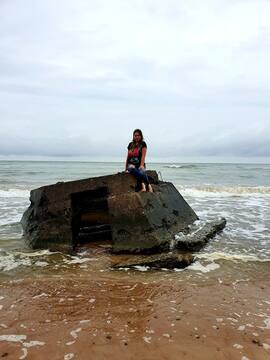
Vokiečių kariuomenės radiolokacinis postas Jūrkalnėje
Siekdamos apsaugoti Kuržemės pakrantę nuo galimo sovietų ar net Vakarų sąjungininkų puolimo, Vokietijos ginkluotosios pajėgos keliose vietose dislokavo radiolokacines stotis, kurios leido daug anksčiau nustatyti priešo oro veiklą. Vienas jų įrengtas ties Jūrkalne
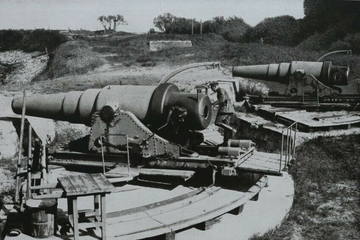
Apie Daugavgrivos tvirtovę
Pasakotojas aprašo įvykį Daugavgrivos tvirtovėje I pasaulinio karo metais, kai ją subombardavo vokiečių dirižablis. Tvirtovė buvo vienas iš strateginių objektų, išlaikęs savo svarbą iki Antrojo pasaulinio karo pabaigos.
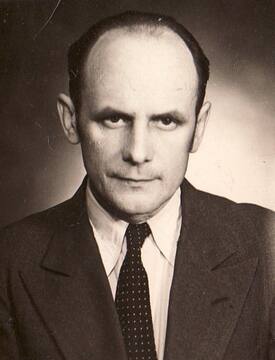
Slapta ir pavojinga Valdemaro Ģinterso veikla
Valdemaro Ģinterio vardas daugeliui latvių pabėgėlių buvo paskutinė viltis pabėgti į Švediją. Per didelis pabėgėlių dėmesys buvo pavojingas, todėl Ginteris tai laikė paslaptyje.
Baterijos vado Aleksandro Stebelio likimas.
Legendinio baterijos vado kapitono Aleksandro Stebelio likimą gaubia paslaptis.
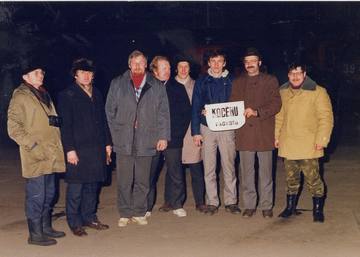
Kocēniečio Tālavo Megnio prisiminimai apie įvykius 1991 m. barikadose Rygoje
Kocēniečio Tālavo Megnio prisiminimai apie įvykius 1991 m. barikadų Rygoje.
„Sausio 13 dieną apie 40 kocėnų gyventojų organizuotai išvyko iš kolūkio į demonstraciją Rygoje autobusu „Laz“, kurį vairavo Vitalijus Sprukts, ir mikroautobusu „Latvija“, kurį vairavo Jānis Grava.
Po demonstracijos, susitikę prie autobusų, kelis kartus per radiją išgirdome Latvijos liaudies fronto raginimą galintiems pasilikti Rygoje ir ginti strategiškai svarbius objektus, kad jų gaudymas būtų apsunkintas, panašiai kaip atsitiko Vilniaus televizijoje. Šiuos kadrus, kuriuos Podnieks nufilmavo prieš išvykdami į Rygą, matėme.
Apie Latvijos nepriklausomybės karą ir 1918 metų įvykius Alūksnėje
1918 m., vokiečių kariuomenei įžengus į Alūksnę, latvių šaulių batalionai pasitraukė į Sovietų Rusiją. Iki 1918 m. gruodžio pradžios įsitvirtino vokiškas režimas ir buvo vykdomos pertvarkos. Vokietijai pasidavus kare, bolševikai grįžo į Alūksnę ir atkūrė savo valdžią. Suomijos savanoriai taip pat kovojo Latvijos nepriklausomybės kare kaip Estijos kariuomenės dalis. 1919 m. vasario 21 d. Alūksnėje, prie stoties, vyko įnirtingos kautynės tarp bolševikų ir suomių savanorių pulko „Šiaurės berniukai“.

Tukumo aerodromo paslaptis
Tukumo aerodromas slepia paslaptį, kurios iki šiol niekas neišsprendė – ar tikrai aerodromo teritorijoje yra branduolinės raketos branduolinė galvutė, kurią 1990-aisiais aerodromą apleidus, ten iškasė Rusijos kariuomenės specialiosios tarnybos?
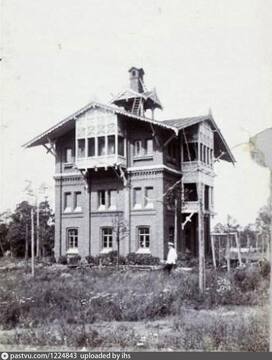
Sparnuotieji kariai
XX amžiaus pradžioje buvo plačiai naudojama komunikacijos priemonė pašto karveliais arba pašto karveliais.

Rusijos kariniai lėktuvai sudužo Ledurgos ir Žvardės poligonuose
1992 m. pradžioje du sovietų lėktuvai Mig-27 D vieną dieną paslaptingomis aplinkybėmis sudužo 40 minučių skirtumu Lēdurgos ir Zvārdės poligonuose.
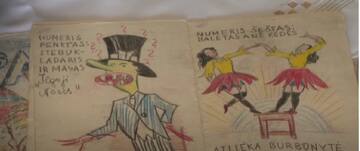
„Taiga“ tremtyje – žurnalistika prieš režimą
Vytenis Rimkus menininkas, kuris už Sibiro tremtyje leistą laikraštį „Taiga“ buvo nuteistas mirties bausme, bet likimas jam leido išgyventi ir sugrįžti į Lietuvą. Tai pasakojimas apie dvasios stiprybę, kūrybos galią ir neištrinamą tautinę tapatybę net gūdžiausioje tremtyje.
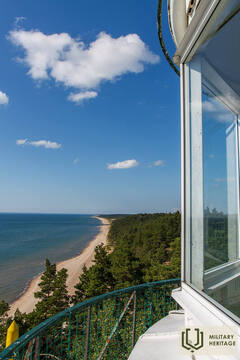
Užavos pakrantės ir sovietų pasieniečių gamtos nuotraukos
Saugomo augalo nuotraukos pasienio apsaugos teritorijoje istorija.
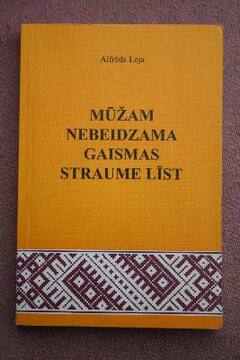
Prisiminimai apie poetą Alfredą Lėją
Buvusio Aivzvīgiko Alfrēdo Lėjos prisiminimai iš knygos „Amžinai krinta begalinis lietaus upelis“.
Aizvīķi ir jo gyventojai taip pat labai nukentėjo Antrojo pasaulinio karo supervalstybių malūnuose.
Alfredas Ley savo atsiminimuose rašo:
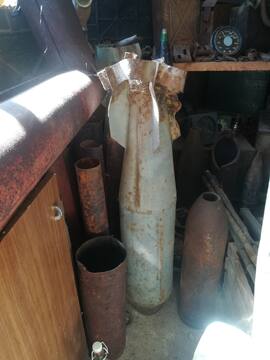
Šmeižikės vaikystė bombų sprogimų šešėlyje – Fosforo kapsulės
Vaikystę praleidęs netoli Zvārde taikinio poligono, apsuptas sprogimų ir skrendančių reaktyvinių lėktuvų, vis tiek kartais savaitgaliais galėdavau patekti į poligoną. Sovietų armijai pasitraukus, žemė buvo nusėta bombų krateriais ir daugybe sprogstamųjų užtaisų ne tik poligono laikų, bet ir Antrojo pasaulinio karo laikų. Berniukams ypač patiko deginti fosforo kapsules...
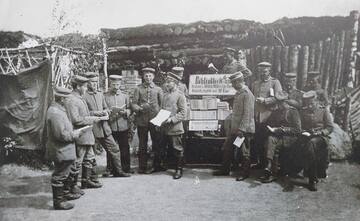
Apie požeminį miestą Egipte ir Sodiškes
1915 m., kai į Latvijos teritoriją įžengė vokiečių kariai, pirmasis karo etapas pasižymėjo manevrų karu. 1915 m. rudenį, frontui stabilizuojantis ties natūralia Dauguvos upės kliūtimi, prasidėjo pozicijų karas, trukęs dvejus metus – iki 1917 m. rudens, kai Vokietijos kariuomenė, pasinaudojusi revoliuciniais pokyčiais Rusijos imperijoje ir Rusijos kariuomenės demoralizacija bei žlugimu, ėmėsi puolimo.
Lemtingas posėdis bunkeryje: 1949 m. Lietuvos partizanų vadų suvažiavimas
1949 m. vasario 10-20 dienomis Radviliškio rajono Minaičių kaimo Miknių sodybos bunkeryje įvyko vienintelis partizanų vadų suvažiavimas okupuotoje Lietuvoje, kurio metu buvo įkurtas Lietuvos laisvės kovos sąjūdis (LLKS) ir paskelbta Nepriklausomybės deklaracija.
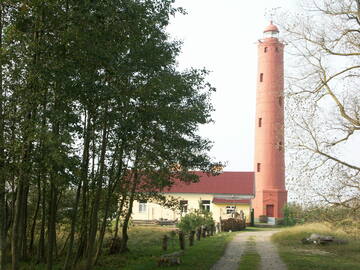
Akmenrago švyturys ir seklumas – vienos didžiausių laivų kapinių Baltijos jūroje
Būtent Akmensrago švyturio apylinkėse 1923 m. sausio 13 d. ant seklumos tragiškai užplaukė ir sudužo garlaivis Saratov , prie kurio prisiglaudė K. Ulmanio vadovaujama laikinoji vyriausybė, kuriant nepriklausomą Latvijos valstybę.
Olmanių pakrantės baterija
Į šiaurę nuo Ventspilio yra dar viena svarbi pakrantės baterija. Jis buvo Olmanyje ir vadinosi „Krasnoflotskaya“.
Tėrvetės raketų bazė
Tėrvetės raketų bazė buvo viena iš slaptų strateginių SSRS karinių bazių, kurioje buvo dislokuotos balistinės raketos R12.
Priverstinis darbas Jalakos linijoje
Kaip Jalakos linijoje buvo kasami prieštankiniai apkasai, siekiant apsisaugoti nuo vokiečių puolimo 1941 metų vasarą.
Lūšės mūšis: dvylikos sukilėlių pergalė prieš sovietų traukinį
1941 m. birželio 24 d. Mažeikių apskrities Lūšės stotyje nedidelis lietuvių sukilėlių būrys nuginklavo sovietų karių ešeloną ir išlaisvino į Sibirą vežamus lietuvius bei latvių šeimas - tai tapo vienu iš unikalių 1941 m. Birželio sukilimo epizodų.

Jungtinės aviacijos šventė – tikra nacionalinė šventė
Pasakotojas aprašo vieną populiariausių ir gausiai lankomų Latvijos renginių – Aviacijos šventę Spilvėje. Aprašoma šventės eiga ir apimtis. Akcentuojamas aviacijos populiarumas Latvijoje.
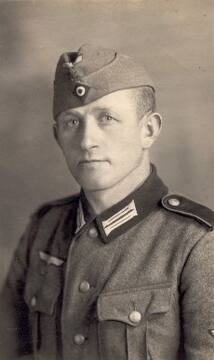
Dingę vokiečių armijos kariai per Kuržemės mūšius – Hermanas Faulsas
Vokiečių armijos grupės „Šiaurė“, kuri vėliau Kurlando apgulties metu buvo pervadinta į „Kurlandą“, dokumentacijoje vis dar trūksta aiškios informacijos apie maždaug 50 000 vokiečių armijos karių. Šių kareivių trūksta. Dar ir šiandien šių karių artimieji bando aptikti savo artimųjų ir protėvių pėdsakus Kuršijoje – tiek dokumentinių, tiek fizinių. Viena tokių istorijų yra apie Hermaną Faulą, kuris buvo dingęs nuo 1944 metų gruodžio 27 dienos – 3-iojo Kuršo mūšio, arba Kalėdų kovų.
Kurmaičių tiltas: karo vaiduoklių vieta
Mažeikių rajone, Kurmaičiuose, 1904-1905 m. pastatytas geležinkelio tiltas per Ventą tapo ne tik strategiškai svarbiu objektu karo metu, bet ir vieta, apie kurią sklando paslaptingi pasakojimai apie karių vaiduoklius ir nepaaiškinamus reiškinius.
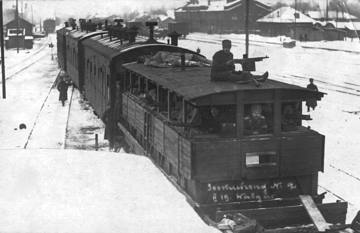
Apie Latvijos nepriklausomybės karą ir 1919 metų įvykius Alūksnėje
1919 m. kovo 27 d. 1-asis Valmieros pėstininkų pulkas kartu su Estijos gvardijos (kaitselit) Talino (tuomet Rėvelės) ir Tērbato batalionais bei trimis šarvuotaisiais traukiniais nuo Melnupės upės krantų pradėjo Latvijos išvadavimą nuo bolševikų.
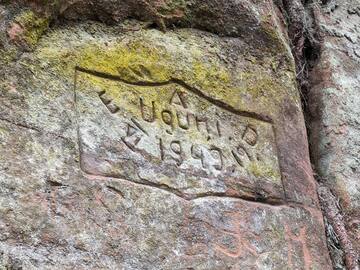
Istoriniai įrodymai Līči – Laņģi skardžiuose
Fragmentai iš kraštotyros entuziasto Aivaro Vilnio pasakojimo apie istoriją ir jos liudijimus, rastus Lodėje ir Liepoje, dabartinėje Cėsių savivaldybėje.
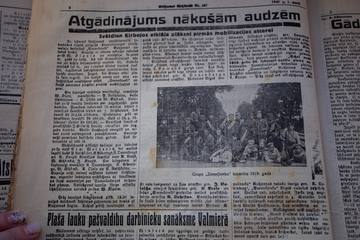
Šiaurės Latvijos kariuomenės įkūrimo Rūjienos pusėje fragmentas
Šiaurės Latvijos armija buvo Latvijos karinė formacija Latvijos nepriklausomybės karo metu, kuri buvo suformuota 1919 m. vasario 3 d. – kovo 31 d. Estijos teritorijoje ir Estijos kariuomenės išlaisvintuose šiauriniuose Vidžemės regionuose. Iki 1919 metų liepos brigada logistikos ir operacijų atžvilgiu buvo pavaldi Estijos ginkluotųjų pajėgų štabui ir Estijos kariuomenės vyriausiajam vadui. Tada ji buvo sujungta su Pietų Latvijos brigada ir suformuota Latvijos armija.
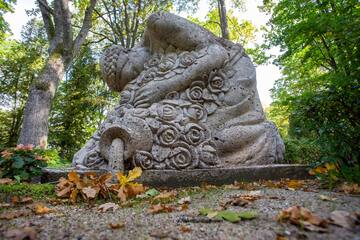
Apie mažiau žinomus latvių skulptoriaus Kārlio Zāles kūrinius senosiose Dīvalos ir Trikātos kapinėse
Vienas iš mažai žinomų skulptoriaus Kārlis Zāle (1888-1942) kūrinių – travertino skulptūra „Nukritusios rožės“, sukurta 1939–1940 m., siejama su Brolių kapinių ansamblio kūrimu.

Apie D. Breikšo tautinių partizanų grupę
Atminimo vieta įkurta Raunos valsčiaus buvusių „Daiņkalnų“ ir „Graškalnų“ namų vietoje, po kuriais 1950–1952 metais bunkeriuose slapstėsi Dailonio Breikšio (slapyvardis Edgars, 1911-1952) vadovaujama tautinių partizanų grupė.
Julius Kuperjanovas ir jo kapas
Estijos nepriklausomybės kovų didvyrio Juliaus Kuperjanovo kapas sovietmečiu tapo pasipriešinimo simboliu.
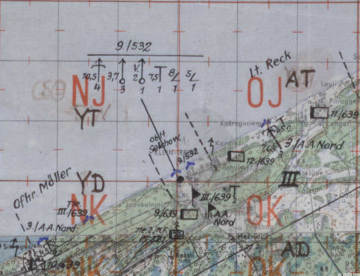
Raudonosios ir Vokietijos armijos planai tarp Mazirbės ir Gipkos 1945 m. gegužės mėn
Pačioje Antrojo pasaulinio karo pabaigoje tiek puolimo pozicijose esanti Raudonoji armija, tiek gynybinės pozicijose esanti Vokietijos armija turėjo planų, kurių, pasibaigus Antrajam pasauliniam karui, nė viena pusė neįgyvendino.
Undvos karinė bazė
1940 m. rugpjūčio 22 d. Tagamõisa pusiasalyje buvo skirta 594 ha žemės sovietų karinės bazės Nr. 32 (Undva) statybai.
"Gyvi nepasiduosime!": paskutinės valandos bunkeryje
1948 m. sausio 7 d. Milių kaimo miškelyje, Viekšnių valsčiuje, po ilgo pasipriešinimo žuvo du jauni partizanai - Pranas Šiuipys ir Albertas Švažas, atsisakę pasiduoti sovietų kariuomenei.

Vaidavai ant barikadų
2020 m., belaukiant 1991 m. barikadų 30-mečio, Vismants Priedītė dalijasi vietos gyventojų dalyvavimo šiuose istoriniuose įvykiuose istorija.
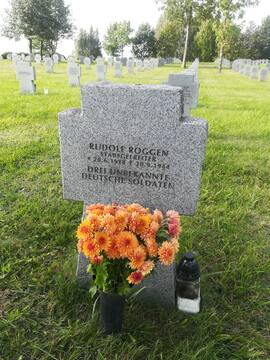
„Karas nesibaigia, kol nebus palaidotas paskutinis kareivis“ (Saldus vokiečių karių kapinės)
1944 m. spalio 10 d. Kuržemė iškilo kaip atskiras ir išskirtinis mūšio laukas. Apsupta buvo laikoma apie 500 000 vokiečių karių. Remiantis 1-ojo Baltijos fronto štabo pranešimais, norint visiškai išlaisvinti visą Baltijos pakrantę, prireikė tik „nedidelių pastangų“. Tačiau kovos Kurlande tęsėsi dar septynis mėnesius ir Kurlandas tapo Antrojo pasaulinio karo pabaigos simboliu.
Per septynis mūšio mėnesius iki 1945 m. gegužės vokiečių pajėgos Kuržemėje prarado 154 108 žuvusius, sužeistus ir dingusius be žinios karius. Nuo 1997 metų vyksta Karo kapinių apžiūra ir karių perlaidojimas prie Saldus ir šiuo metu čia galima rasti 27 000 žuvusių karių pavardžių.
Prireiks - kovosim: Radviliškio kautynės su bermontininkais 1919 m.
1919 m. lapkričio 21-22 dienomis Radviliškio mieste įvyko lemtingos kautynės tarp Lietuvos kariuomenės ir bermontininkų - rusų belaisvių bei vokiečių savanorių jungtinių pajėgų, kurios baigėsi reikšminga lietuvių pergale.

Svetimšaliai pasienio zonoje
Pasieniečiai turėjo unikalų būdą sužinoti apie nepažįstamus žmones pasienio ruože.
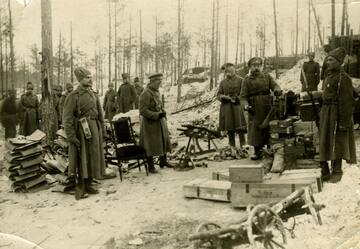
Apie kalėdines kovas
Kalėdinės kautynės baigėsi sausio 11. Trečią mūšio dieną latvių šauliams pavyko užimti stipriai įtvirtintą vokiečių kariuomenės poziciją – Ložmetējkalni. Kalėdinių kovų kaina buvo labai didelė. Šimtai Latvijos ir kitų Rusijos armijos karių žuvo bandydami išmušti vokiečius iš savo pozicijų. Pasakotojas vaizdingai aprašo mūšio lauko scenas pasibaigus kalėdinėms kautynėms.
Pastangos užkirsti kelią Ķegumo HE sprogimui
Antrojo pasaulinio karo metais, kariuomenėms traukiantis, Latvijoje buvo susprogdinta daugybė kariniu ir logistiniu požiūriu svarbių objektų, kad šie ištekliai neliktų priešams. Tokių objektų buvo ir prie Ķegumo, kur vienas svarbiausių objektų yra Ķegumo HE, kuri savo darbuotojų pastangomis ir pastangomis nebuvo visiškai sunaikinta.
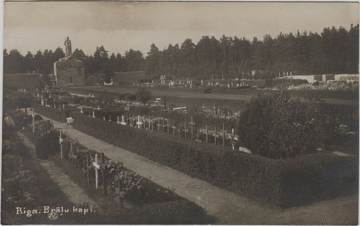
Taip Rygoje gimė Brolių kapinės
Pasakotojas aprašo, kokiomis aplinkybėmis buvo sukurtas žymiausias Latvijos memorialas, skirtas žuvusiems kariams. Kaip matyti iš prisiminimų, tautos didvyrių kapinės susidūrė su aibe kliūčių ir piktadarių – nepritariančiu požiūriu iš ne tik bažnyčios, bet ir Rygos miesto vadovybės.

Pabėgėlių laivelių perkėlimo punktas iš Kuržemės pakrantės į Švediją prie „Pāžu“ namų
Viena iš svarbių persikėlimo vietų buvo prie „Puslapių“ namų, kur dabar stovi paminklas – „Vilties burė“. „Laivai atplaukdavo reguliariai ir daugiausia žmonių išplaukdavo iš „Pažo“, – pasakoja I. Freibergo prisiminimai.
Avinurmės mūšis
Apie Avinurmės mūšį ir sovietų karių įvykdytą kraujo praliejimą.
Visi buvome Nepriklausomybės karą laimėjusių tėvų sūnūs
Endelis Laulas pasakoja savo tėvo istoriją apie dalyvavimą Kõnnu mūšyje ir tik kaip tik pabėgusį nuo egzekucijos.

7-oji Siguldos pėstininkų pulko bermontiada, Didžiosios kunigaikštienės Valijos Veščūnos apdovanojimas Lāčplės karo ordinu Alūksnėje.
Po Latvijos nepriklausomybės karo didysis seržantas Valija Veščunas 1919 m. lapkričio 19 d. už kautynes su bermontininkais prie Plėnų namų buvo apdovanotas Lāčplės karo ordinu. Valija Veščunas viena pirmųjų perėjo Lielupę priešo ugnimi.

Unikalaus karinio objekto Karostoje istorija
Jau daug metų nepastebėjau, kad Senosios Liepojos gyventojai domėtųsi unikaliomis vietomis, esančiomis vos aštuonių – dešimties kilometrų į šiaurę nuo miesto centro. Tačiau miško tankmėje, kopų pakrantėje ar pelkių takeliuose pasislėpusios Karostos istorinės vietos – ne mažiau įdomūs istoriniai faktai ir istorijos, vertos seniai pamirštų legendų. Viena iš jų – buvusi SSRS 23-ioji pakrantės artilerijos baterija – bus šios istorijos tema.
Mūšiai Kibassaare mieste
1941 m. plačiai išsilaipinus amfibijai nuo žemyno iki Muhu pakrantės, vokiečiai išsilaipino ir pietrytinėje Saremos dalyje.

Apie Kolkos pakrantės pasieniečius
Kolkiškietės Valijos Laukšteinės prisiminimai apie laikus Kolkoje, kai buvo pasieniečiai.
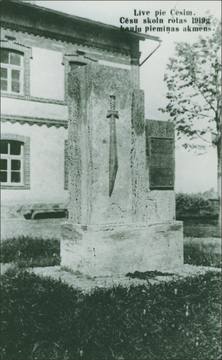
Paminklas, skirtas Cėsių pulko studentų būriui prie buvusių Līvu parapijos namų
1919 m. Cėsių mūšiuose dalyvavo Cėsių pulko savanorių moksleivių kuopa, kuri birželio 5 d. Cėsių vidurinės mokyklos patalpose buvo suformuota iš 108 jaunuolių iš Valmieros ir Cėsių mokyklų. Jau naktį iš birželio 5 d. į 6 d., maždaug valandai po vidurnakčio, suskambėjo aliarmas ir įmonei buvo liepta persikelti į vietą. Kuopa žengė į Mācītājmuiža – Meijermuiža liniją, kuri buvo laikoma svarbiausia mūšio zona.
Pirmajame mūšyje buvo sužeisti keli studentai, tačiau tą pačią dieną nuo labai rimtos skrandžio žaizdos mirė Edgars Krieviņš iš Valmiera. Birželio 13 d., Valmieros miesto kapinėse, su karine pagyrimu palaidotas. Edgaras Krieviņš po mirties buvo apdovanotas Lāčplėsio karo ordinu.
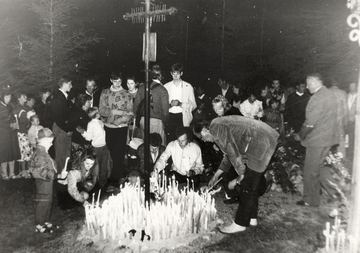
Rainių žudynės: NKVD nusikaltimas be liudininkų
1941 m. birželio 24-25 d. Rainių miškelyje, netoli Telšių, NKVD ir raudonarmiečiai ypatingai žiauriai nukankino 73 politinius kalinius iš Telšių kalėjimo - tai tapo vienu kraupiausiųjų sovietų nusikaltimų Lietuvoje.
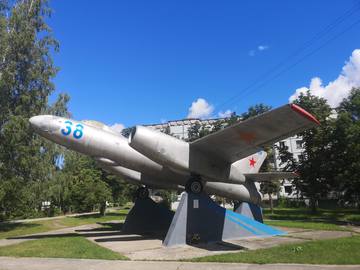
Skultės karinis bombonešis
Straipsnyje laikraštyje vaizdingai demonstruojama situacija šiuolaikinėje Latvijoje, kai daug kur išsaugoti ir net restauruojami (dažnai vietos valdžios lėšomis) sovietinę okupacinę armiją šlovinantys aplinkos objektai. Valdžios neryžtingumas ir valios stoka sukuria visuomenėje ilgalaikes, konfrontacines situacijas. Įvairūs paminklai, memorialai ir aplinkos objektai suvokiami ne kaip istorijos ar įamžinimo vietos, o kaip įrankiai, tęsiantys sovietinio okupacinio režimo ideologiją.

Latvių legiono 42-ojo pulko kuopos vado Vernerio Preierso prisiminimai apie Kuržemės kautynes.
Kuržemės tvirtovė buvo sukurta po Rygos žlugimo 1944 m. spalio 13 d. ir Rusijos prasiveržimo į Klaipėdą spalio 10 d., taip nutraukiant sausumos eismą su Vokietija.
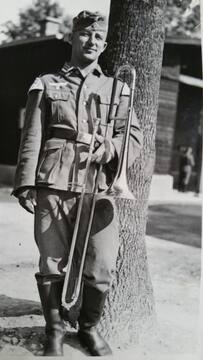
Per Kurlandos mūšį dingę vokiečių kariai – Karlas Grimmas
Vokiečių armijos grupės „Šiaurė“, vėliau Kurlando apgulties metu pervadintos „Kurlandu“, įrašuose iki šiol nėra aiškios informacijos apie maždaug 50 000 vokiečių karių. Šie kariai įtraukti į dingusių be žinios sąrašą. Dar ir šiandien šių karių artimieji Kurlande bando aptikti jų giminių ir protėvių pėdsakus – tiek dokumentinių, tiek fizinių. Viena iš tokių istorijų yra apie Karlą Grimmą, vokiečių karį iš Švabijos (istorinis regionas pietvakarių Vokietijoje, prie Reino ir Dunojaus upių ištakų), kurio karinė karjera nutrūko 1944 m. spalio 27 d. Krūmių namuose netoli Vaiņodės (5 km į šiaurės vakarus nuo Vaiņodės, Latvija).
Sääre pakrantės gynybos baterija Nr. 43
Jau 1907 m. Rusija pradėjo ruoštis savo sostinės Sankt Peterburgo gynybinėms pozicijoms kurti.
Paskutinės kautynės prie Sedos
1944 m. spalio 7 d. prie Sedos įvyko vienos paskutinių didesnių reguliarios kariuomenės kautynių Lietuvos teritorijoje, kur Tėvynės apsaugos rinktinės savanoriai stojo į kovą su Raudonąja armija, gindami Lietuvos laisvę.
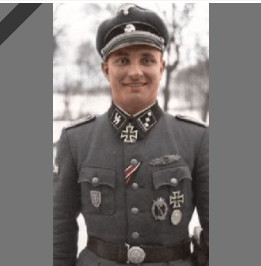
Mūšiai prie Pilsblīdenės Roberto Ancānso prisiminimuose
Robertas Ancansas (1919 m. lapkričio 11 d. – 1982 m. sausio 1 d.) – Latvijos legiono karininkas, Geležinio kryžiaus Riterio kryžius, dalyvavęs Pilsblidenės mūšiuose 1945 m. kovo 16–17 d. Šeštasis Kurlando mūšis vyksta ketvirtą dieną. Anzāns tarnavo Pilsblidenės vietovėje, todėl gerai pažinojo vietovę. Anzans diviziją vėl nukreipia dar vienas lūžis fronte – 8 km gylio Raudonosios armijos invazija. Anzanas šiose kautynėse sužeistas.

Prisiminimai apie Karo muziejaus kūrimo pradžią
Pasakotojas aprašo aplinkybes, kuriomis buvo įkurtas Karo muziejus. Minėtos problemos ir surinkimo darbai.
Lyg antrąkart gimusi
1941 m. liepos ir rugpjūčio mėnesiais Kražiuose nacistinė valdžia išžudė beveik visą miestelio bendruomenę. Stebuklingai šią tragediją išgyveno Kražių geto kalinė, K.Požėlos vardo kolūkio kolūkietė Marytė Gerčienė.
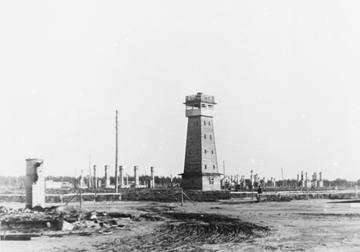
Apie Salaspilio memorialą kaip sovietinio okupacinio režimo ideologijos simbolį.
Aprašyme vaizdingai aprašomas memorialo politizavimo mastas ir jo vaidmuo Sovietų Sąjungos ideologijoje. Tekste minima, kad vienas pagrindinių tikslų – kova su „fašizmo atgimimu“. Tai rodo, kad ir toliau stengiamasi sukurti ideologinę infrastruktūrą, siekiant nuslėpti komunistų nusikaltimus ir užkirsti kelią skirtingoms nuomonėms. Atminimo ženklai, sovietų armijos kapinės ir muziejai, įvairūs kultūriniai renginiai palaikė „Latvijos išlaisvinimo“ ir „broliškos Sovietų Sąjungos“ mitą. Nacių nusikaltimų faktai buvo panaudoti kuriant apverstą Antrojo pasaulinio karo įvykių vaizdą Latvijoje.
Apie Praną Belecką-Malūnininką ir lemtingą mūšį prie Gudų malūno
Pranas Beleckas-Malūnininkas, buvęs Lietuvos kariuomenės puskarininkis, išgarsėjo kaip drąsus Žemaičių apygardos Šatrijos rinktinės Vyčio būrio vadas, kurio vadovaujami partizanai surengė drąsų puolimą prie Gudų malūno.
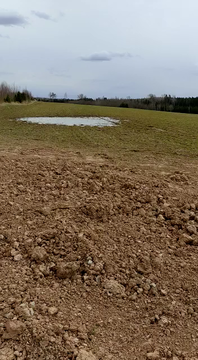
Mūšiai Kaulačių pusdvaryje 1945 m. kovo mėn
1945 metais prie Kaulačių pusdvario buvo Raudonosios armijos stebėjimo postas. Liudininkai prisiminė, kad muštynės kilo 1945 m. kovą. Tai ne pirmas kartas, kai šiame lauke aptinkami Antrojo pasaulinio karo laikų kapai.
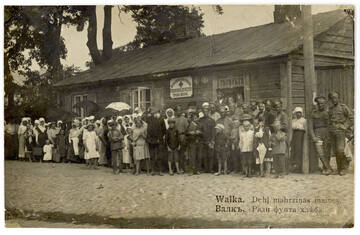
Iš Ádolfo Erso knygos „Vidzeme kovoje už laisvę“ apie pabėgėlių kelionę Valkoje
Nuo pabėgėlių laikų Valkai buvo suteiktas svarbesnis vaidmuo nei kitiems Vidžemės miestams, nes čia veikė politiškai aktyvus laikraštis „Līdums“, kuriame buvo kaldinami Latvijos dvasiniai ir politiniai ginklai, taip pat dėl to, kad čia susiliejo keliai iš trijų Latvijos pusių: iš Rygos, Alūksnės, Mozekilės, taip pat iš Estijos ir Rusijos. Ji turėjo ryšių su pabėgėliais iš visų pusių – Tartu, Pliska, Maskva ir Sankt Peterburge. Čia buvo didelis pabėgėlių centras.
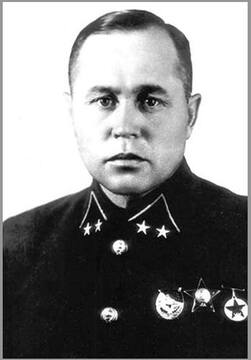
Generolo majoro N. Dedajevo sužalojimas Liepojos tvirtovėje, Vidaus forte
1941 m. birželį sėkmingas vokiečių kariuomenės puolimas buvo pasiekęs Liepoją, kai Liepoją užpuolė Vokietijos šarvuotųjų pajėgų 291-oji pėstininkų divizija. 1941 m. birželį prasidėjus karo veiksmams tarp nacistinės Vokietijos ir Sovietų Sąjungos, sovietų armijos Liepojos garnizoną sudarė karinio jūrų laivyno ir Raudonosios armijos Liepojos karinės jūrų bazės kariai. Šių kautynių metu buvo mirtinai sužeistas generolas majoras N.Dedajevas
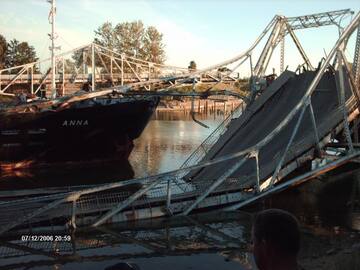
O.Kalpako tilto istorija
Per daugiau nei 100 gyvavimo metų tiltas išgyveno du karus ir skirtingus savininkus, kurie turėjo įtakos jo eksploatacijai. Tiltas buvo susprogdintas per Pirmąjį pasaulinį karą, bet po karo buvo atstatytas, tik 1926 m. vėl jį apgadino garlaivis Narne. Tiltas vėl buvo atstatytas, bet nukentėjo ir per Antrąjį pasaulinį karą, kai įsiveržusi sovietų kariuomenė apšaudė Liepojos uostą.
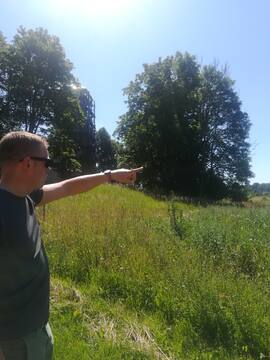
1945 m. Griezės stovykla – vieta, kur susipynė likimai
Istorikas Robertsas Sipenieksas pasakoja apie radinius Grieze filtravimo stovyklos vietoje
Pasienio režimo zonos kirtimas
„Propuskas“ arba leidimas kirsti pasienio režimo zoną buvo privalomas kaip autobuso bilietas.
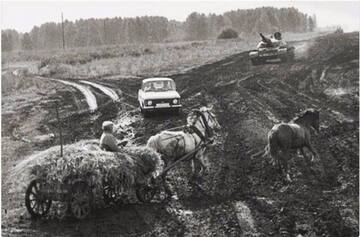
Tankų užmėtymas akmenimis
Sovietmečiu visa Kuržemės pakrantė buvo uždara zona. Vaikai, gyvenę prie sovietų armijos dalinio Targalės valsčiuje, tarp jų ir Ovišiai, smagiai mėtydavo akmenis į tankus.
Krakių bunkeris: dviejų partizanų žūties vieta
1951 m. sausio 7 d. Jonuškių miško bunkeryje žuvo du Žemaičių apygardos partizanai - Albertas Švažas-Vanagas ir Pranas Šiuipys. Po pusės amžiaus Mažeikių šauliai atstatė bunkerį ir įamžino kovotojų atminimą.
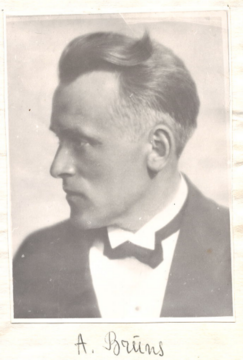
Vokiečių armijos divizijos štabo požeminis bunkeris prie „Sirsninių“ namų Pampaliuose
Alfredo Browno pasakojimas apie vokiečių štabą jo gimtojo namo kieme, kur vokiečių kareivis vedė Alfredą užrištomis akimis po nakties priedanga, nežinodamas, kad šis namas yra jo gimtasis namas ir Alfredas net užsimerkęs pažįsta kiekvieną kieme esantį akmenį.
Paminklas Pietų Estijos išvaduotojams
Paminklui pagaminti panaudotų medžiagų ir sąnaudų sąrašas.
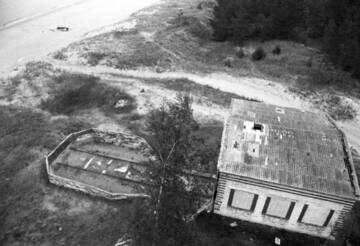
Prisiminimai apie pasienio zoną
Įvairios scenos iš gyvenimo sovietmečiu, kurias prisiminė rašytojas, prozos ir poezijos autorius Gunārs Anševics, gyvendamas pasienio zonoje.
Tankų poligonas Dobelė – 2 (sodas)
Viena didžiausių tankų poligonų Šiaurės Europoje buvo dabartinėje Gardene teritorijoje. Dobelė-2 iki 1992 metų buvo karinė gyvenvietė, kurioje buvo dislokuota 24-oji tankų mokymo divizija.
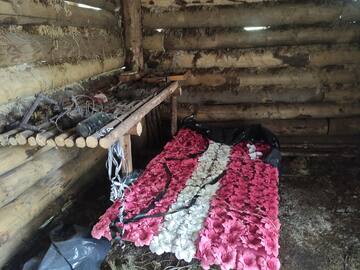
Dzelzkalnų mūšis Žūrių girioje 1946 02 23
1945/46 m. Žalvario grupė 2011 metų žiemą praleido Žūrių girioje prie Dzelzkalnio, kur buvo pastatyti keli bunkeriai. Čia gyveno apie 40 partizanų. 1946 02 23 stovyklą apsupo SSRS vidaus reikalų kariuomenė ir vyko įnirtingos kautynės.
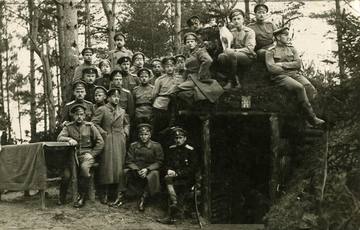
Apie Latvijos lankininkus Olaines apylinkėse
Prisiminimuose atsispindi Latvijos lankininkų kasdienybė Olaine apylinkėse. Aprašomos ne tik gyvenimo sąlygos, bet ir įprasta užduotis – priešininko pozicijų žvalgyba.
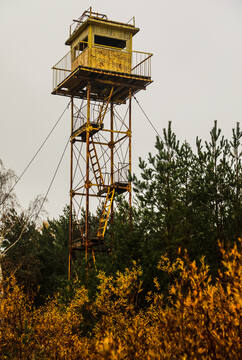
„Atgal į Mazirbę“ (fragmentas)
Aštrus įvykis iš Vilnio Blumbergo gyvenimo, atvykus į Mazirbę pas tetą, virto nemaloniu nesusipratimu su sovietų pasieniečiais ir atšiauria žiemos naktimi.
Tartu švenčia 1919 m. pergalę Tähtverėje
1919 m. sausio mėn. Tähtvere mūšio, įvykusio per Estijos nepriklausomybės karą, kurio metu Estijos kariuomenė išlaisvino Tartu iš Raudonosios armijos, aprašymas.
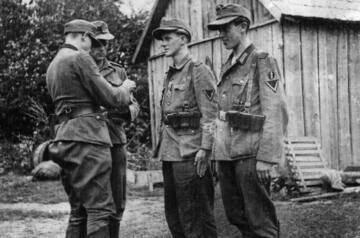
Vokiečių armijos kapralo Felkerio pasakojimas apie žvalgybinį mūšį 1944 m. lapkričio 8 ir 9 d. Selješos namuose Zvārde
Felkeris (vok. Völcker) buvo 20 metų vaikinas, tarnaujantis nacistinės Vokietijos armijos žvalgybos padalinyje, pasakojantis lapkričio 8 ir 9 d. įvykius, kurie ryškiai atspindi fronto įvykius Zvārdėje, kur fronto linija judėjo pirmyn ir atgal 4 mėnesius, įskaitant ir Kerklinių bažnyčios apylinkes.
Šilėnų bombardavimo poligonas
Tarpukariu Šilėnų pelkėtoje vietovėje prie Šiaulių veikė bombardavimo poligonas, kuriame buvo vykdomi Lietuvos karo aviacijos bombų mėtymo ir šaudymo pratimai. Iki šių dienų išlikę betoniniai stebėjimo bokšteliai primena šio poligono egzistavimą.
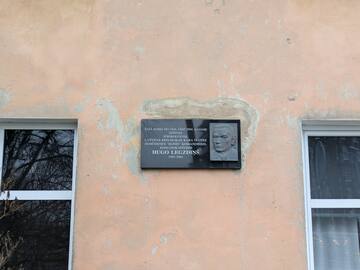
Hugo Legzdziņš, pirmojo Latvijoje povandeninio laivo „Ronis“ kapitonas
Pirmojo Latvijos povandeninio laivo „Ronis“ kapitonas Hugo Legzdziņš, „Ronis“ komandos areštas
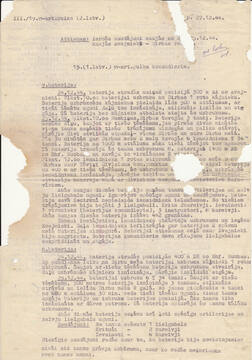
III/19 kapitono Jāņo Ozolo pranešimas. Artilerijos pulkas (2.latvių) 1944 m. gruodžio 24 ir 25 d. mūšiuose
Divizijos vadas kapitonas Jānis Ozols 1944 12 27. Pranešime 15-ojo (1-ojo Latvijos) SS artilerijos pulko vadas praneša apie 7-ojo, 8-ojo ir 9-ojo baterijų pabūklų nuostolius gruodžio 24-25 d. mūšiuose Zvejnieki - Dirbos srityje.
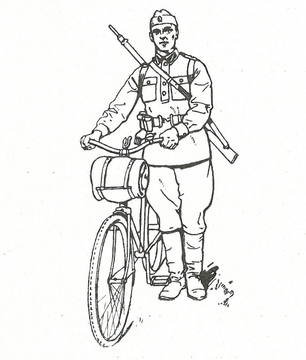
Specialūs įspėjimai dviratininkų sveikatos priežiūrai
Dviratininkų rengimo nuostatuose nurodytos rekomendacijos skirtos Latvijos kariuomenės dviratininkų mokymui. Rekomendacijose daugiausia dėmesio skiriama kario sveikatos problemoms.
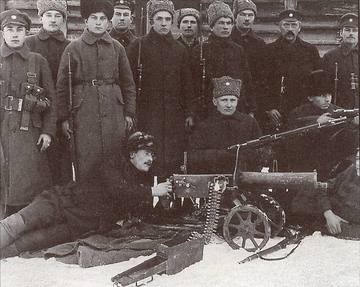
Šiaurės Latgalos išvadavimas iš bolševikų
1918 m. gruodžio 1 d. Raudonosios armijos daliniai, paremti Raudonųjų šaulių daliniais, įsiveržė į Latvijos teritoriją. Siekdami apsaugoti savo namus, šeimas, gimtuosius rajonus, pabėgti nuo siaubo, Balvi apylinkių vyrai griebėsi ginklo ir ėjo į miškus, pradėjo kurtis pirmosios „žaliosios“ grupės. 1919 m. pavasarį, kai buvo paskelbta mobilizacija, daugybei Balvų apylinkių vyrų kovoti sovietinėje Latvijos armijoje atrodė nepriimtini ir jie prisijungė prie „žaliųjų“ grupuočių. Susikūrė Balvų, Silakrogo, Rugėjų, Teterių-Dūrupės ir Liepnos grupės. „Žaliųjų“ grupių veikla Balvių apylinkėse suaktyvėjo 1919 metų kovo mėnesį.
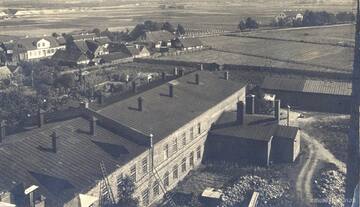
Buvusi medienos apdirbimo įmonė „Vulkāns“
Galinga gamykla, turinti turtingą istoriją, siekiančią 1878 m.
Visvalžo Brizgos (Kārļa kraujos) tautinių partizanų grupė
Īlės „Kārļa Krauja“ jungtinė latvių ir lietuvių tautinių partizanų grupė buvo viena didžiausių pasipriešinimo grupių Latvijos teritorijoje 1947–1949 m.

Neatpažinti kariai. Kovos karininko istorija.
Moreso mūšis – tai paskutinio Antrojo pasaulinio karo etapo epizodas, turėjęs didelę reikšmę tolesnėje karo Latvijos teritorijoje eigoje. Morės mūšis – tai karo veiksmai, vykę 1944 m. rugsėjo 25–spalio 5 dienomis Siguldos gynybos linijoje More valsčiaus teritorijoje. Siguldos gynybinės linijos apkasuose, apie 12 km ilgio, Latvijos legiono 19-osios divizijos kariai, 10 dienų kovoję sunkias kovas su 10–15 kartų didesniu priešo pranašumu, sustabdė Raudonosios / Sovietų armijos dalinių veržimąsi Rygos link.
Latvijos prekybinių laivų nuskendimas evakuojant Taliną Antrojo pasaulinio karo pradžioje
Vokiečių pajėgoms sparčiai artėjant prie Talino, įvyko plataus masto karinio jūrų laivyno Talino evakuacijos operacija. Jo metu minų laukuose ir nuo oro atakų ar pakrantės artilerijos ugnies žuvo daug laivų ir jų įgulų bei jame buvusių žmonių.
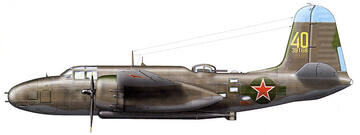
Sovietų aviacijos antskrydžiai Liepojos priemiestyje 1944 m. spalio ir gruodžio mėn
Pasibaigus Antrajam pasauliniam karui, vokiečių pajėgos Kurlande galėjo sėkmingai gintis septynis mėnesius, nes Vokietijos karinis jūrų laivynas išlaikė kovinį pajėgumą iki Antrojo pasaulinio karo pabaigos ir aprūpino Šiaurės armijos grupę, o vėliau Kurlando armijos grupę. Pagrindinis uostas buvo Liepoja, per kurį buvo pristatyta ir išgabenta 80% visų krovinių. Taip Liepoja tapo svarbiu sovietinio Baltijos laivyno ir tolimojo nuotolio aviacijos taikiniu.
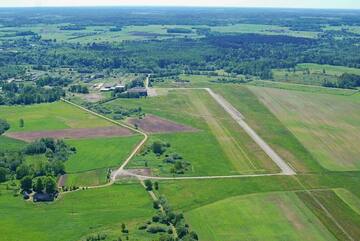
Cīravos aerodromo istorija
Cīravas aerodromas – įkurtas Antrojo pasaulinio karo metais, sovietų naudotas kaip DOSAAF aerodromas, šiuo metu naudojamas žemės ūkio reikmėms ir pramoginėms kelionėms, angare galima apžiūrėti sovietmečio lėktuvus.
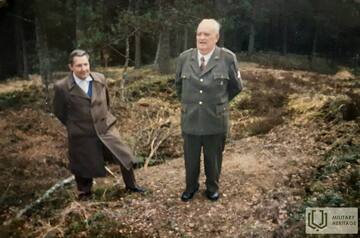
Janio Tilibo prisiminimai apie partizanų būrį „Tėvo vanagai“
Jāņo Tilibso atsiminimai apie partizanų būrio „Tēvijas Vanagi“ veiklą Pietų Kuržemėje iki 1950 m.

600 mm siaurieji geležinkeliai Sēlijoje
Dažnai sakoma, kad karas yra visų dalykų tėvas, ir taip buvo Latvijos kaimo geležinkelių atveju. Bet kuriai armijai, nesvarbu, ar ji puola, ar ginasi, karui vykdyti reikia didelių išteklių. Kai 1915 m. Vokietijos kariuomenė įžengė į Latvijos teritoriją, susidūrė su logistiniais iššūkiais. Iki 1915 metų pabaigos frontas stabilizavosi palei Dauguvos liniją. Istoriškai Sēlijos teritorija buvo mažo gyventojų tankumo, todėl nebuvo išplitusio transporto kelių tinklo.

Apie kampinį namą
Pasakotojas aprašo pirmuosius įspūdžius patekus į Kampinį namą. Prisiminimai atskleidžia atšiaurias kalinių gyvenimo sąlygas.
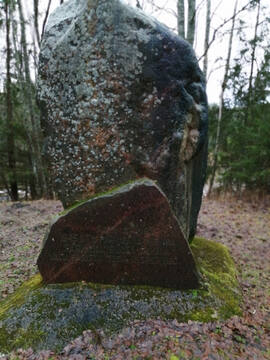
Vilio Samsono aprašymas apie Raudonųjų strėlių mūšį su vokiečių policijos daliniais 1945 m. kovo 7 d
1945 m. kovo 7 d. „Raudonųjų strėlių“ partizanų stovyklą apsupo ir bandė sunaikinti vokiečių kariuomenė. Vilis Samsonas 1974 m. Rygos „Zinātne“ išleistoje knygoje aprašo šio mūšio eigą.
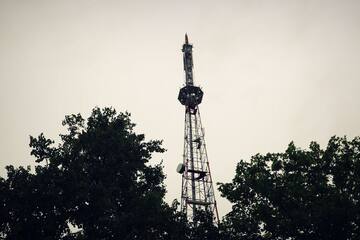
Apie buvusį karinį objektą Upīškalns
Valdo Pigožnio prisiminimai „Upīškalno“ operacijos metu apie Upīškalno karinę bazę
(Pigožnis buvo buvęs Kurmalės seniūnijos vadovas)
Gyvenimo sąlygos Maantee
Maantee kaimo karinis dalinys buvo įsikūręs beveik pasaulio gale, net žiūrint iš Kuresarės.
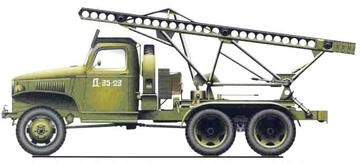
Aizvīki Kuržemės katile
Aizvīkių parke iki šiol gerai matomos Antrojo pasaulinio karo bunkerių liekanos, apkasai, kaponierių pylimai, kuriuose buvo laikomi ginklai. Viena iš ginklų rūšių buvo „Katyusha“ raketų paleidimo sistema.
Motinos diena
Sovietų Sąjungos laikais santuokų registravimas vyko Kingisepo miesto gyvybinės statistikos biure.
Talmuto Allvee prisiminimai apie Ninase pakrantės gynybos baterijos statybą
Pirmieji statybininkai Nine pasirodė dar 1939 metų rudenį.
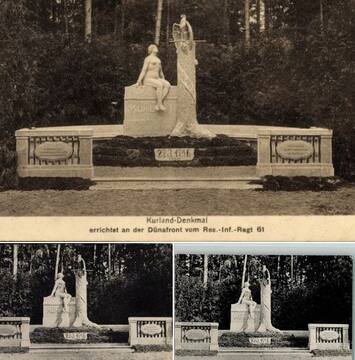
Kuršo (Motinos) paminklas
Pirmojo pasaulinio karo metais vokiečių kariuomenės pastatytas moters formos paminklas
Abruka
1941 m. vasarą prasidėjus karui Abrukoje raudonkariams buvo uždrausta bendrauti su vietos gyventojais.
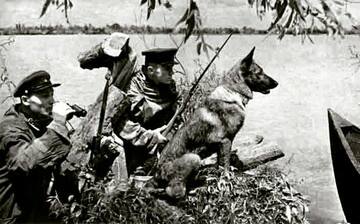
Kuržemės pakrantė – uždara zona
Šaltojo karo metais visa Kuržemės pakrantė buvo uždara visuomenei zona – čia daugiausiai sprendė sovietų pasieniečiai, tam tikrais atstumais įrengę apsaugos postus, o paplūdimyje – apžvalgos bokštus su prožektoriais. Civiliai į pajūrį įleidžiami tik šviesiu paros metu.
Lietuviai gelbėtojai - Miriam Javnaitės-Voronovos išgyvenimo istorija
Antrojo pasaulinio karo metais Miriam Javnaitė-Voronova išgyveno Holokaustą dėka daugelio lietuvių, kurie, rizikuodami savo ir artimųjų gyvybėmis, slėpė, maitino ir globojo persekiojamus žydus.
Apie Stebel akumuliatoriaus konstrukciją
Baterijos statyba buvo nepaprastai brangi.

Valentinos Lasmanės sėkmingas pabėgimas
Biografinė istorija, kurią parašė Valentīne Lasmane apie tai, kaip jai pavyko pabėgti iš įkalinimo vokiečių okupacijos metais
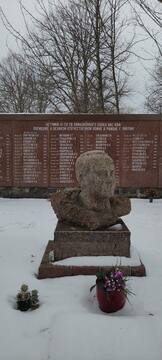
Istorija apie išardytą paminklą Raudonosios armijos 67-osios šaulių divizijos vadui N. Dedajevui.
Į šiaurę nuo Pietinio forto yra didžiausios Liepojos kapinės – Centrinės kapinės. Pietinėje kapinių dalyje yra Raudonosios armijos kapinės, kuriose perlaidoti Liepojos apylinkėse žuvę sovietų kariai, tarp jų – 67-osios šaulių divizijos vadas generolas majoras Nikolajus Dedajevas, 1941 metų birželį vadovavęs Liepojos gynybai.
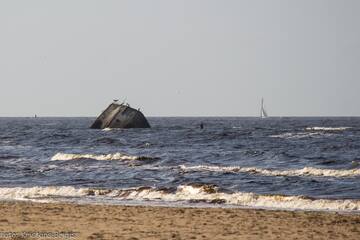
Nuskendęs laivas Mangalsalos saloje
Sovietmečiu čia, karinėje zonoje, sudužo betoninis krovininis laivas „Lady Kathleen“, kurio liekanas iki šiol galima pamatyti jūroje prie kranto. Su juo vis dar sklando įvairūs mitai.
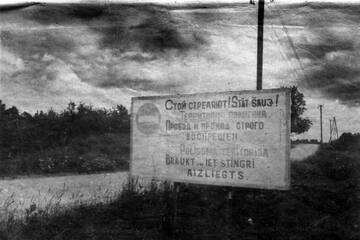
Sovietų aviacijos bomba Ritelių kapinėse
Ritelių kapinės iš tikrųjų buvo tikslinės teritorijos centre. Vietos gyventojai galėjo tik stebėti, kaip jie buvo naikinami.
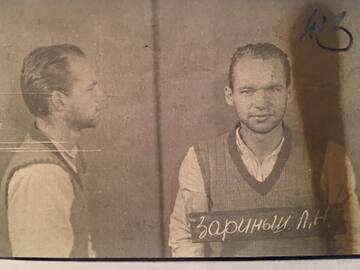
JAV CŽV desantininkas Leonidas Zariņš – „netinkamas verbuoti“ čekai
Leonidas Zariņš buvo užverbuotas CŽV agentu JAV ir 1953 metais lėktuvu iš Vokietijos kirto SSRS sieną ir parašiutu nusileido netoli Aučės. Deja, vienas iš kontaktų, su kuriais jis turėjo susisiekti, pasirodė esąs dvigubas agentas ir Leonidas netrukus buvo suimtas. Jis atsisakė bendradarbiauti su čekistais ir be teismo buvo sušaudytas 1954 m.
Aktoriaus Harijaus Liepinio prisiminimai apie tarnybą Vokietijos kariuomenėje
Vėliau populiarus aktorius Harijs Liepiņš buvo pašauktas į vokiečių armiją ir 1944 metų rudenį išsiųstas į Ķegumą.
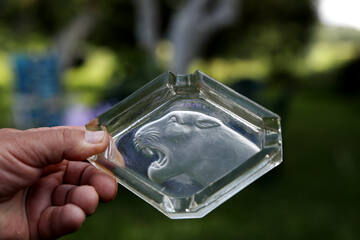
Peleninė su panteros galva iš Vokietijos įtvirtinimų linijų
Krotės apylinkėse buvo išsidėstę paskutinės kariuomenės grupės „Kurzeme“ įtvirtinimų linijos ir ten rasta daug su Antruoju pasauliniu karu susijusių objektų.
10 faktų apie tai, kaip atsirado Tartu taikos sutartis
Viena ryškiausių istorijų apie Tartu taikos gimimą yra tai, kaip 1919–1920 m. žiemą jaunieji kariai buvo priversti žygiuoti ratu aplink miestą. Tikriausiai tai prasidėjo, kai derybos dėl sienų nepavyko. estap, 2-osios divizijos vadas pulkininkas Viktoras Puskaras įsakė Tartu mokyklos mokinių batalionui žygiuoti po miestą taip, kad jis ne kartą eitų ir Aia (dabar Vanemuinės) gatve prie konferencijos pastato, ir Veski gatve, kurioje buvo apsistojusi Rusijos delegacija.











